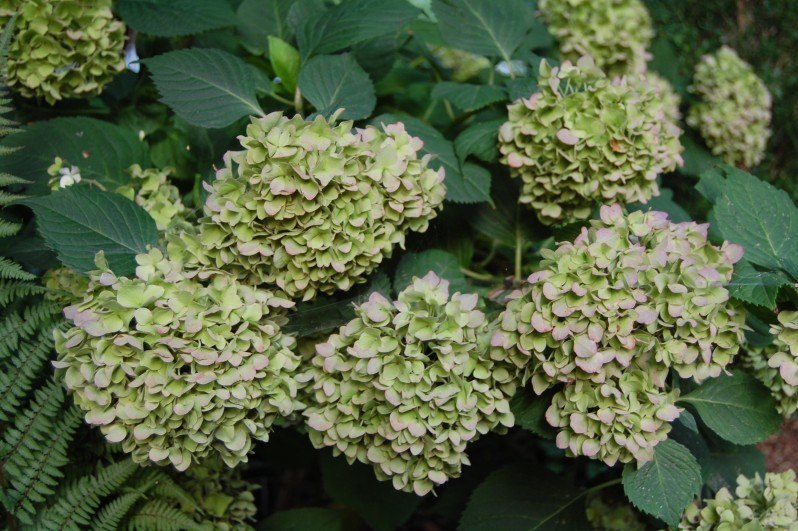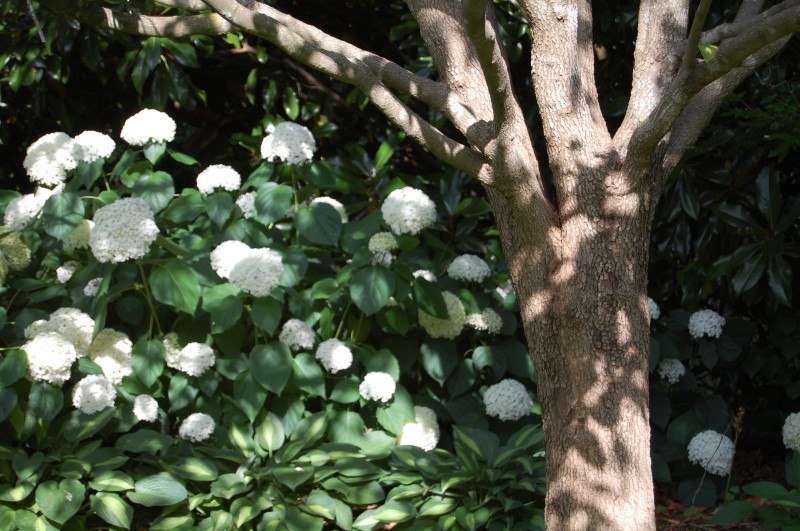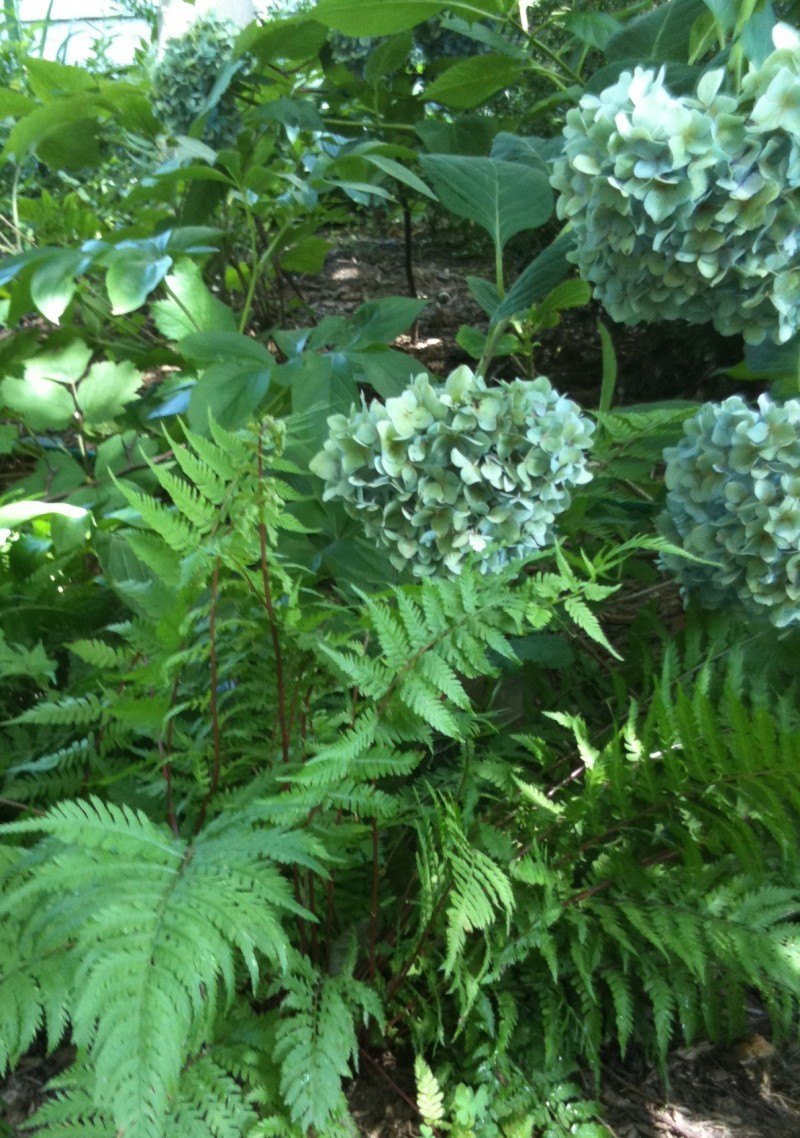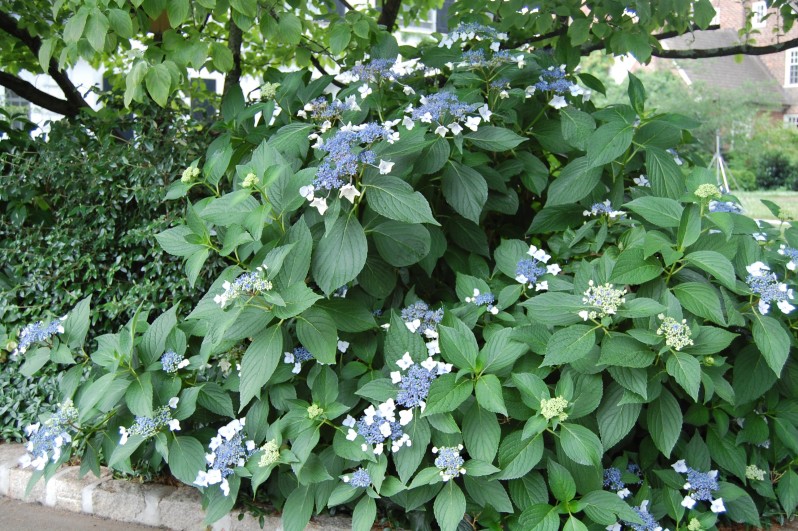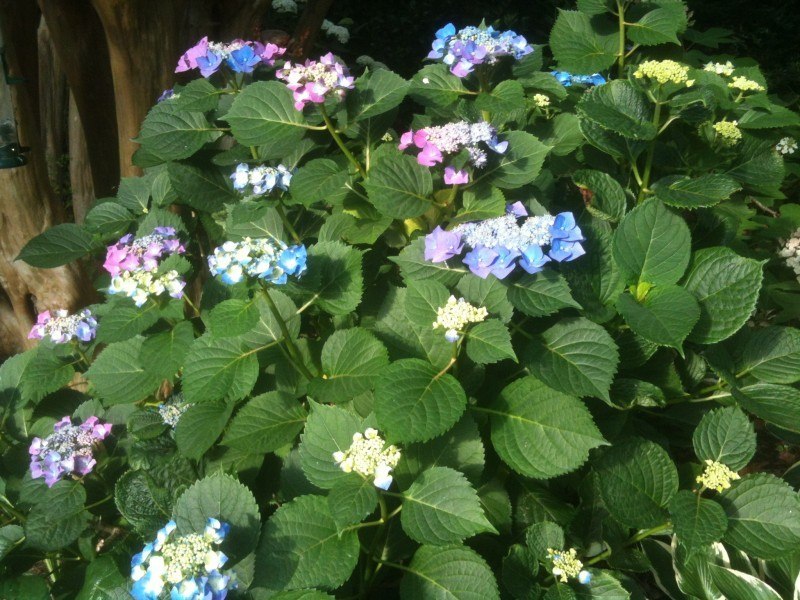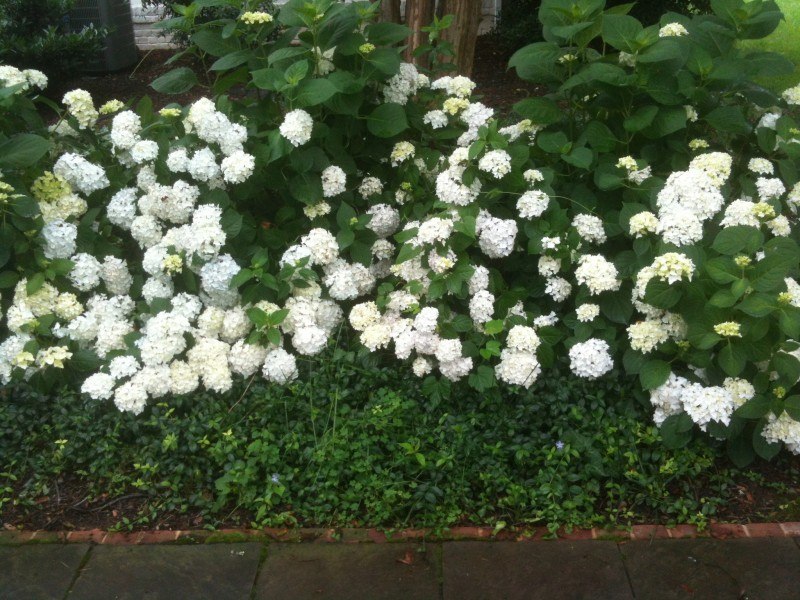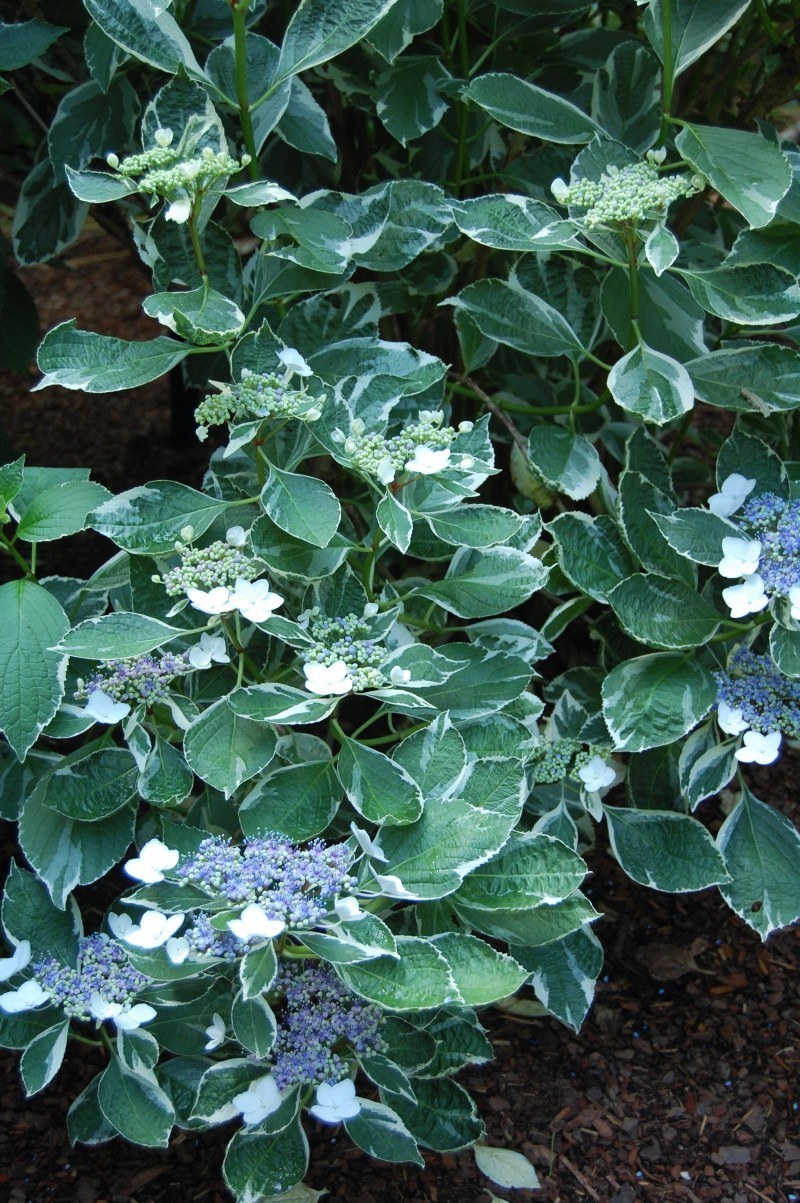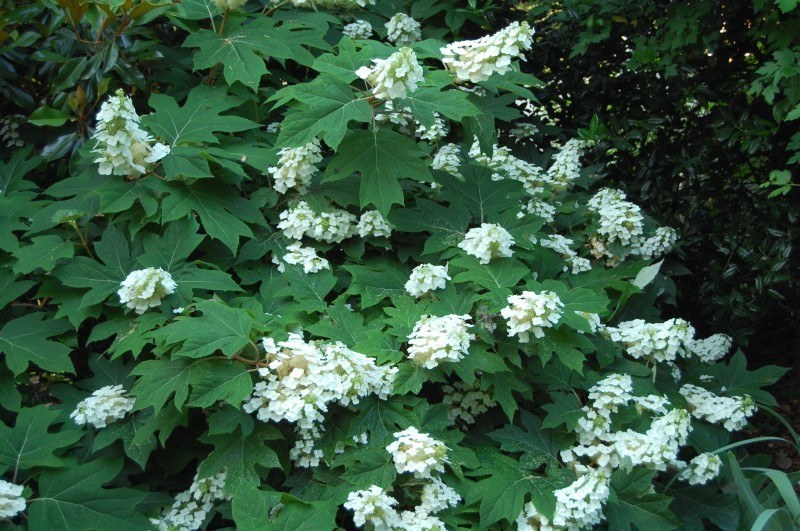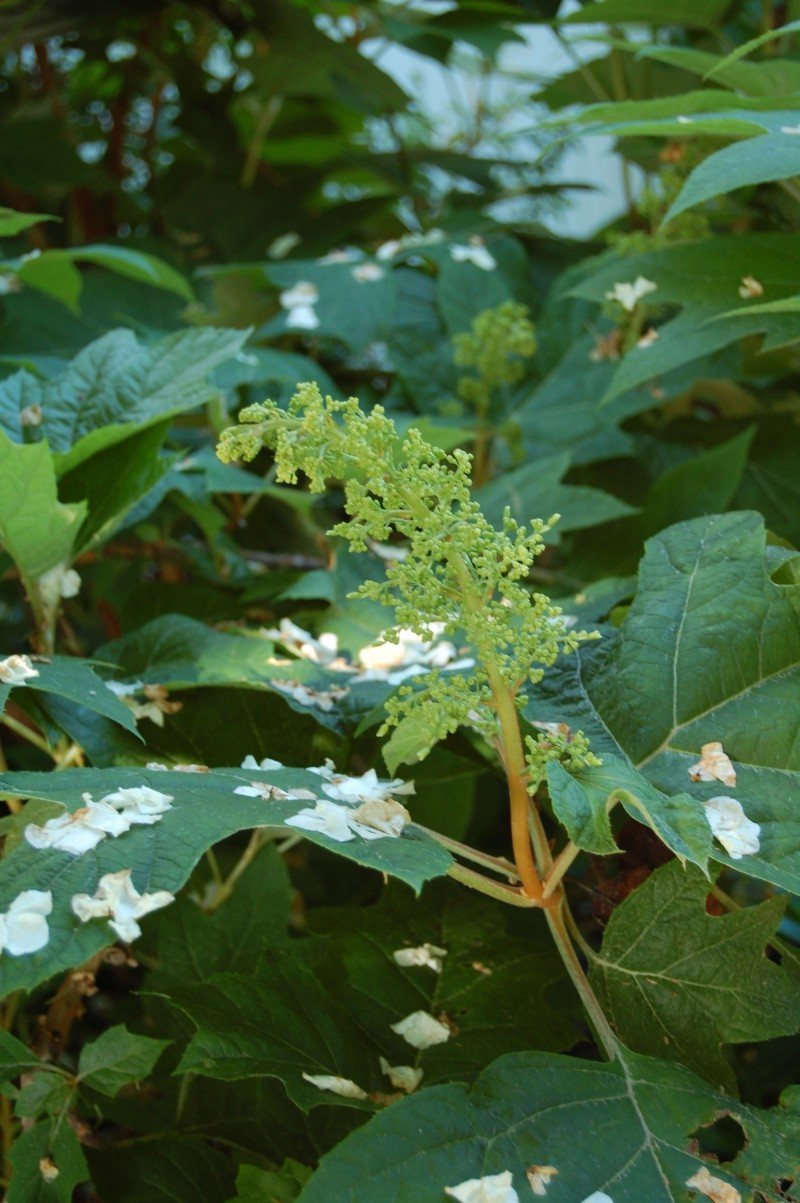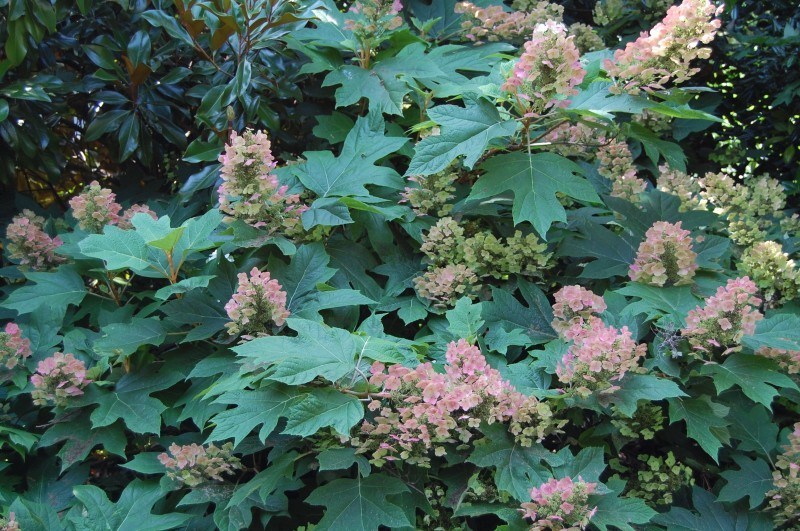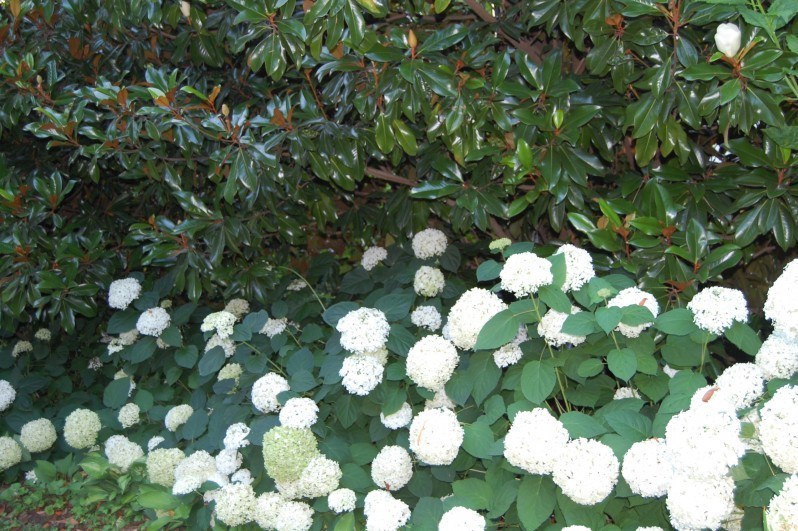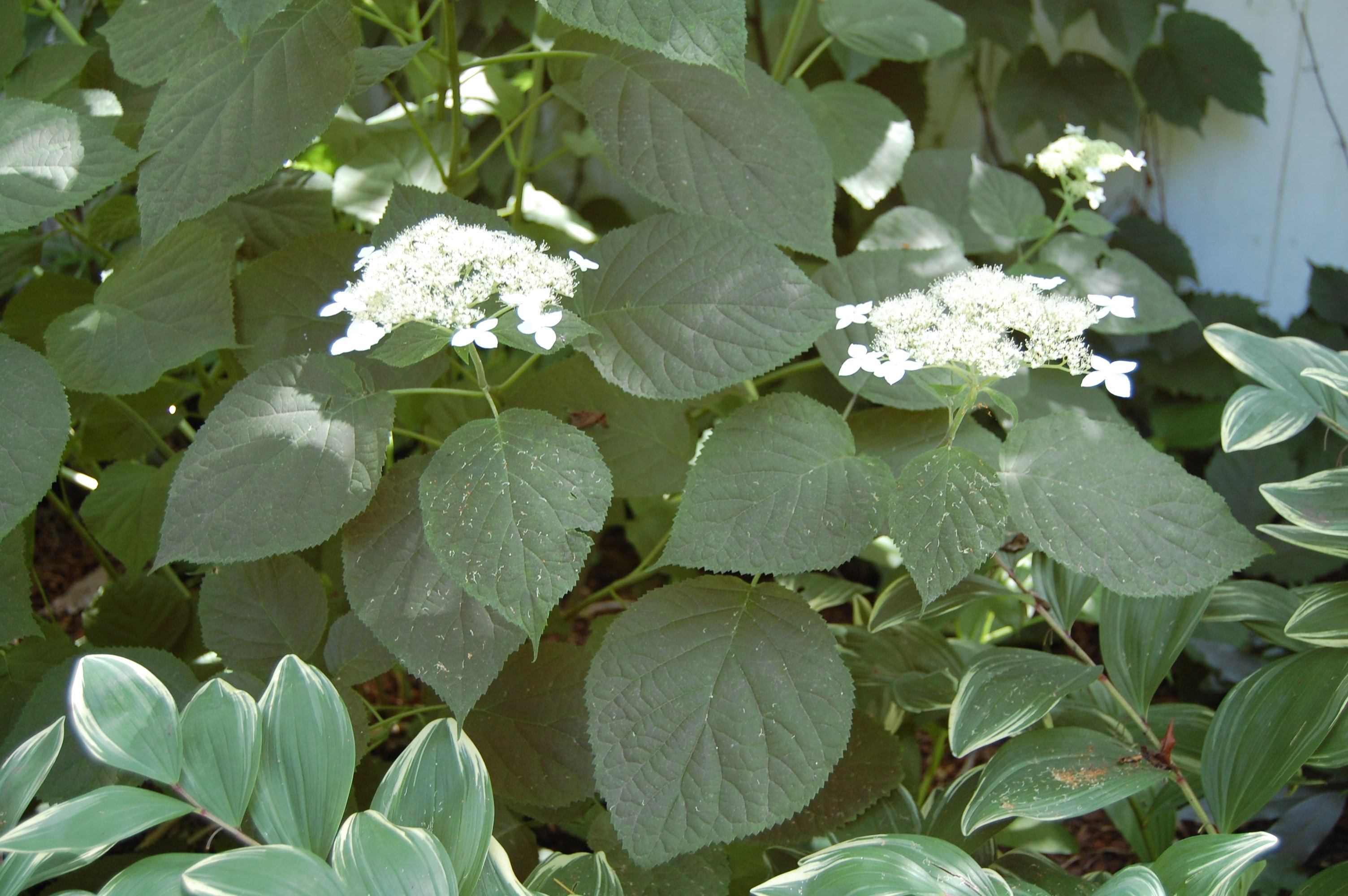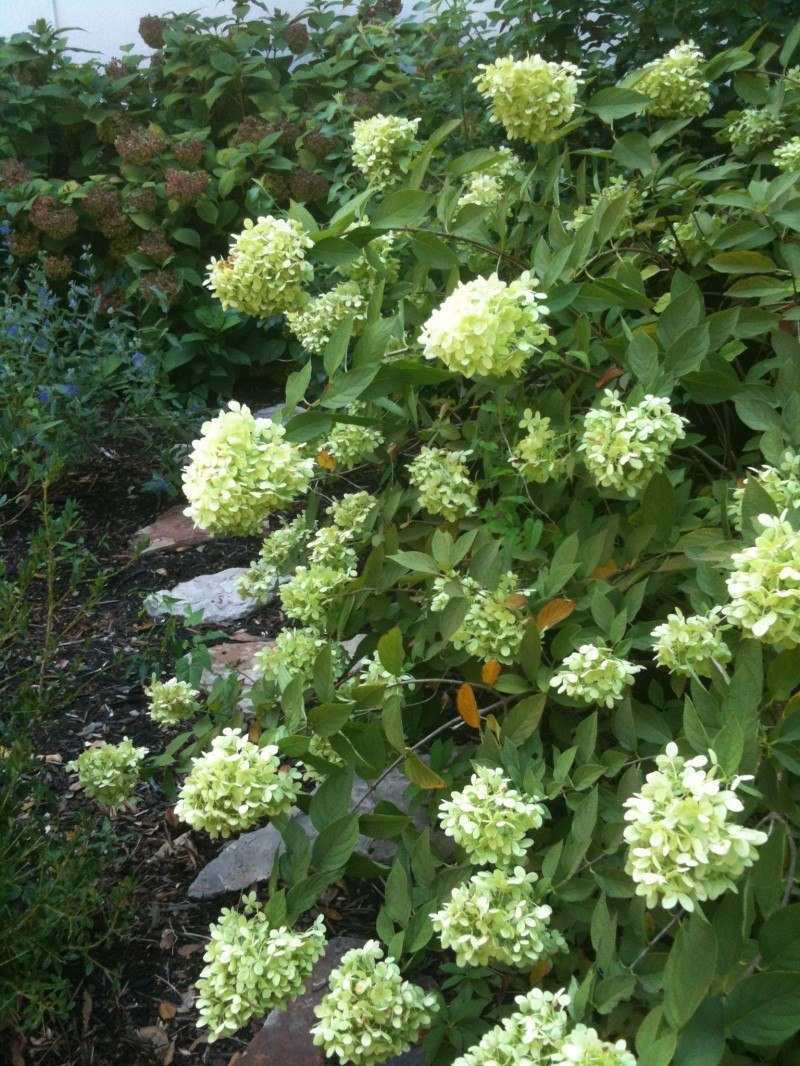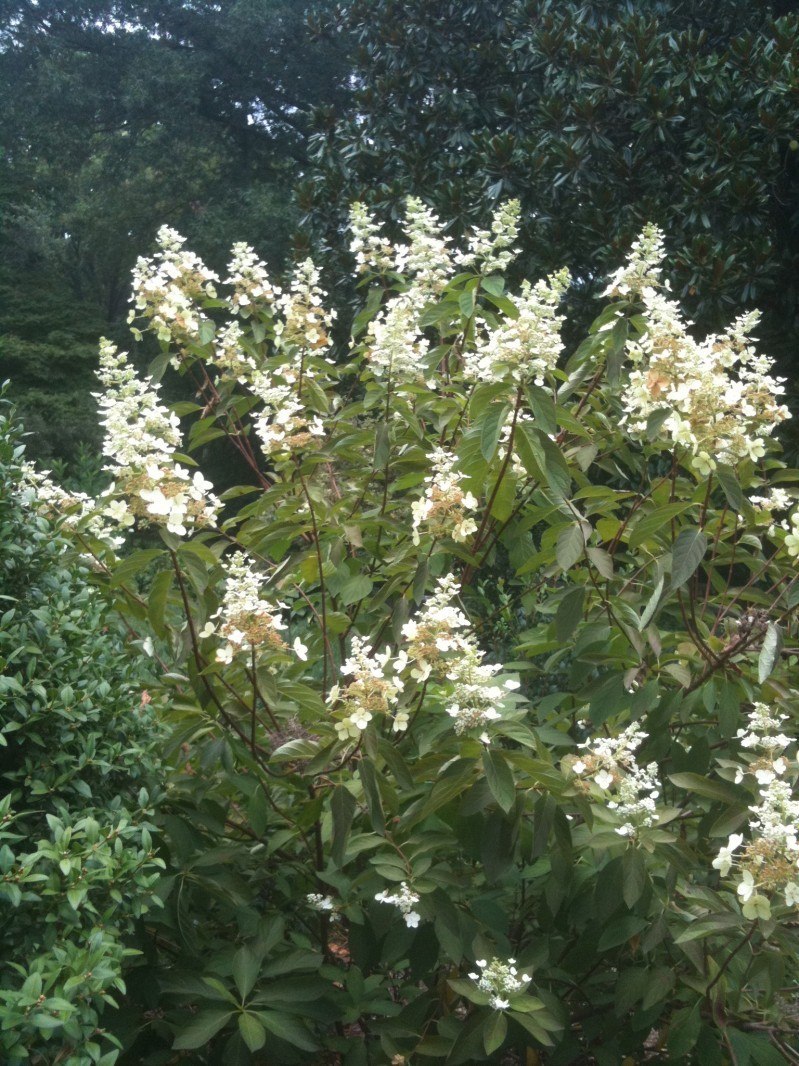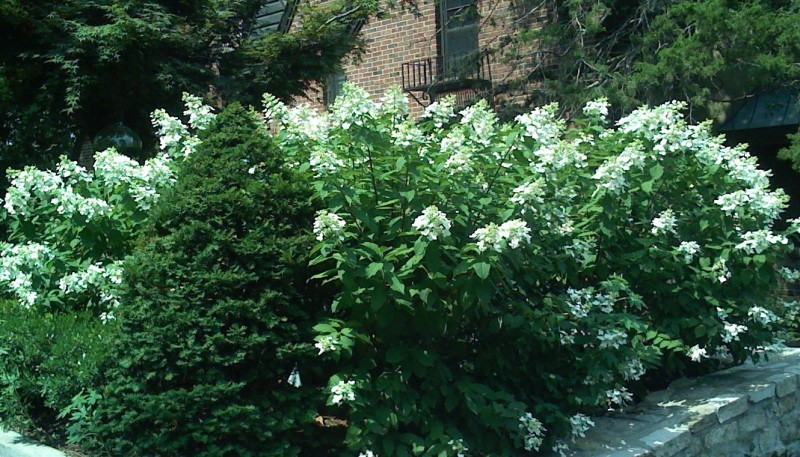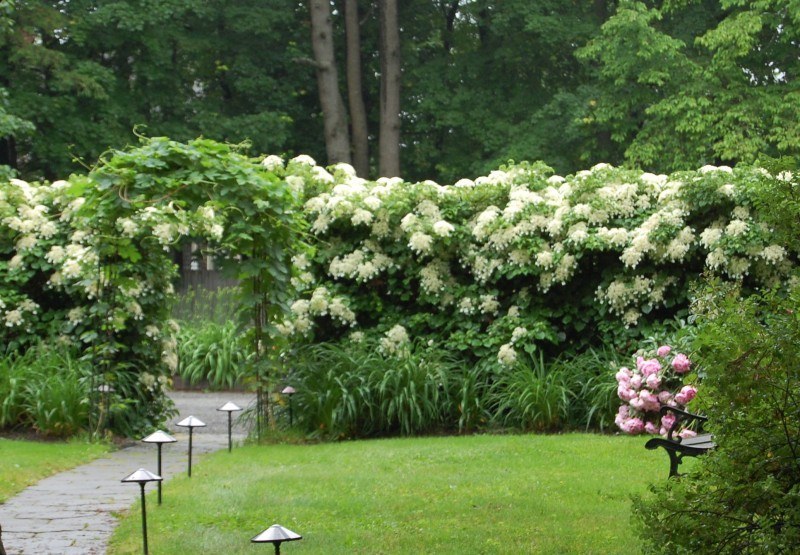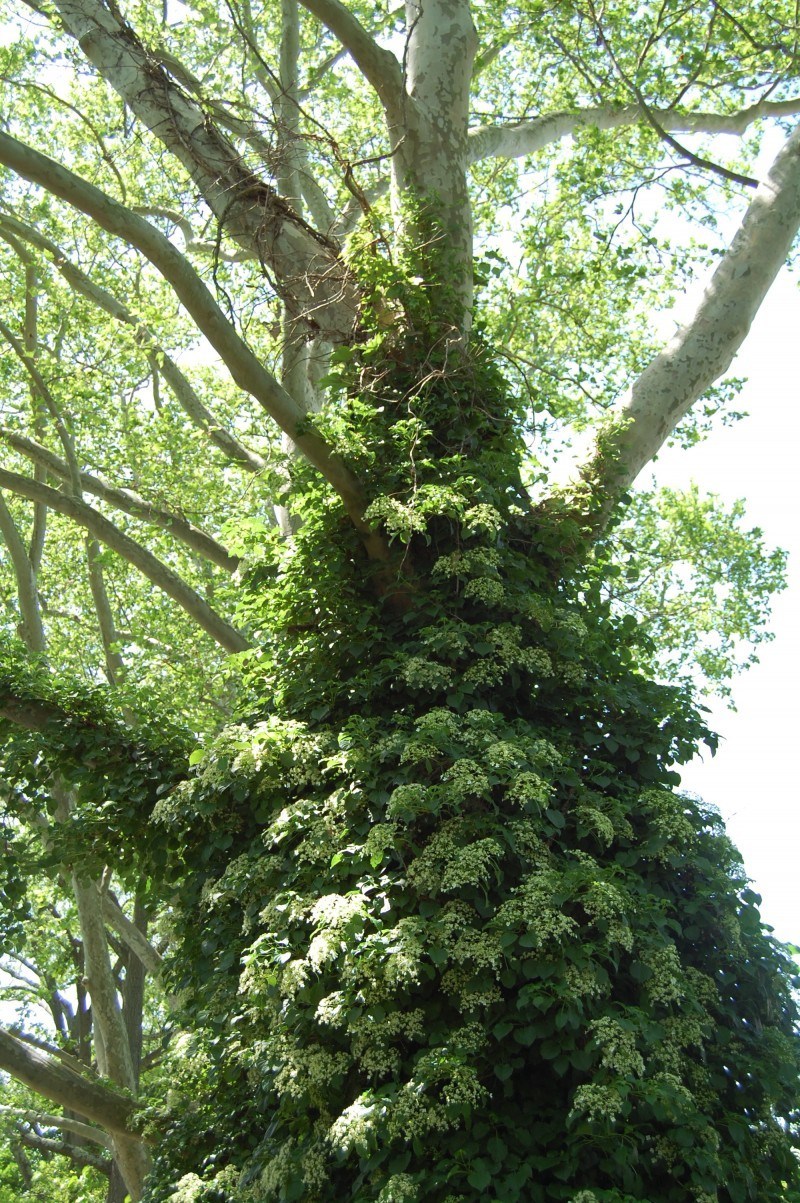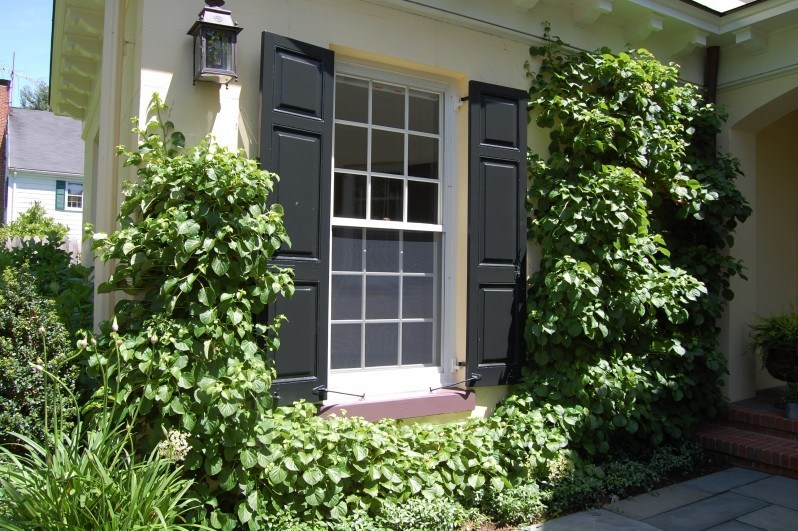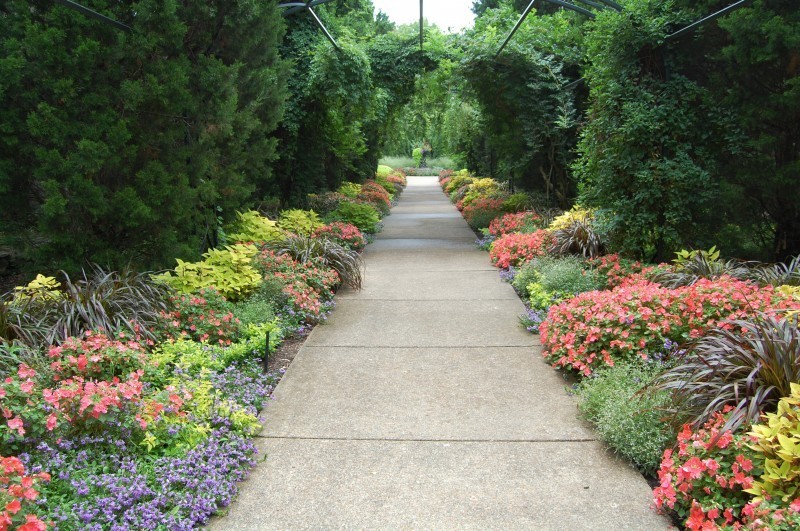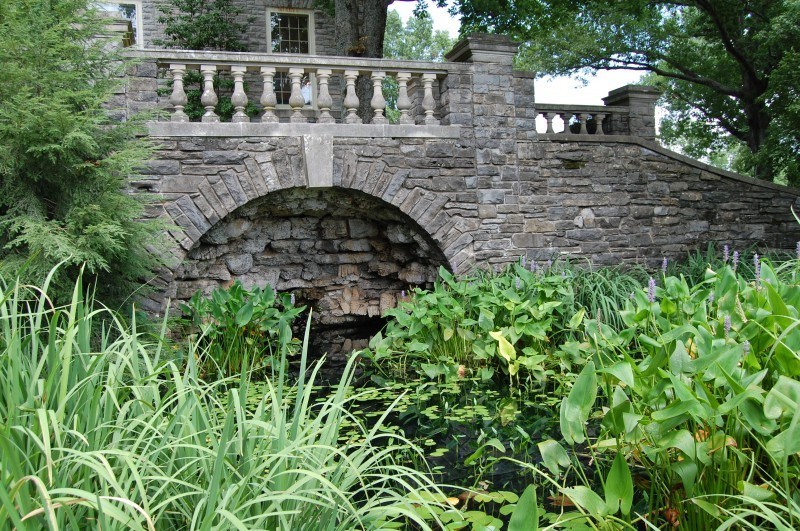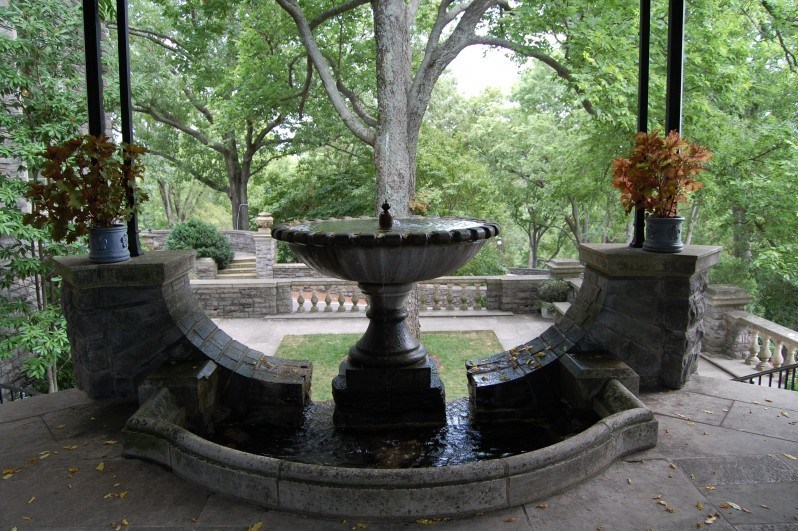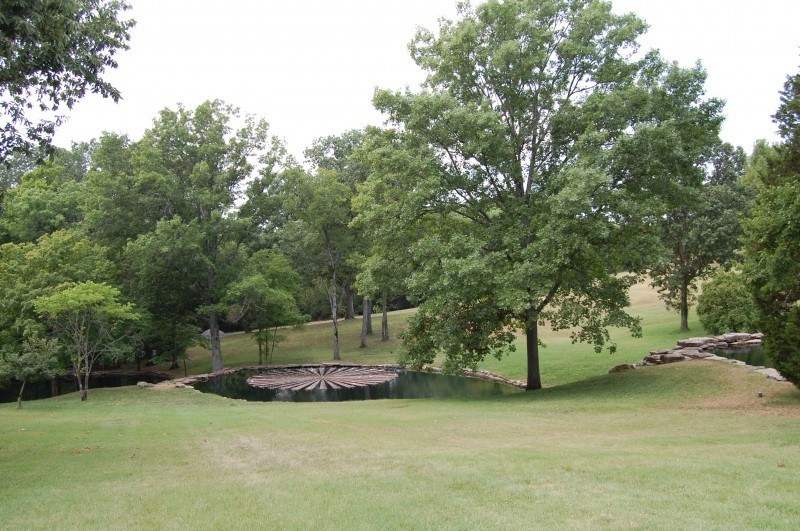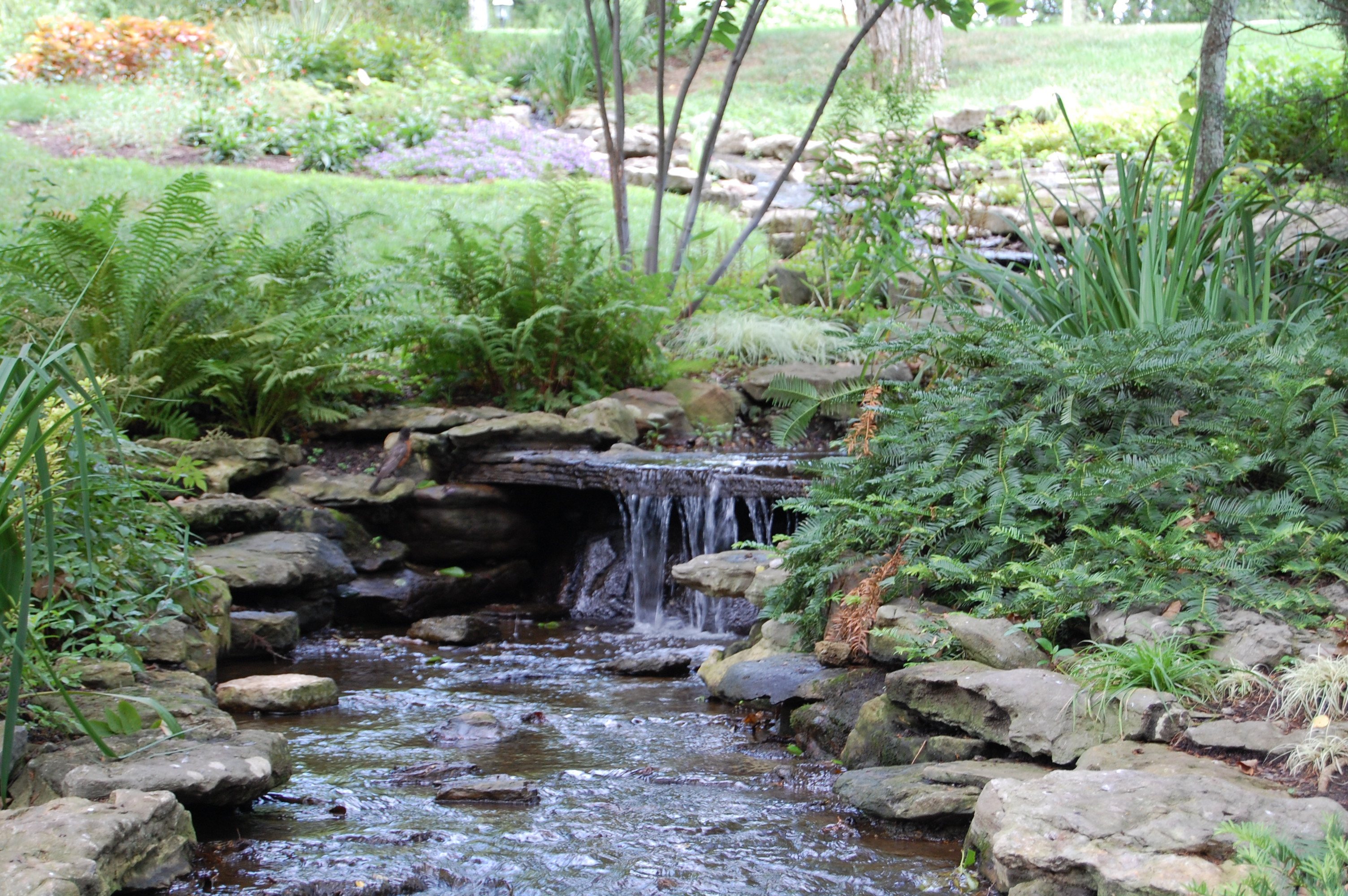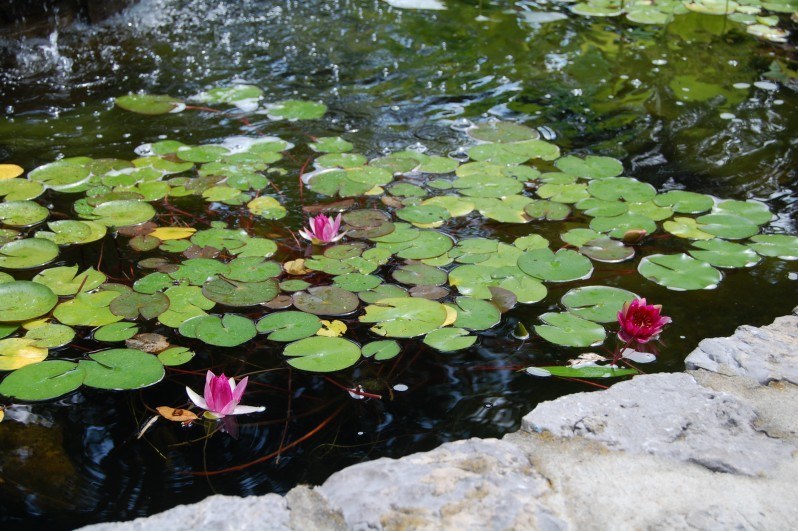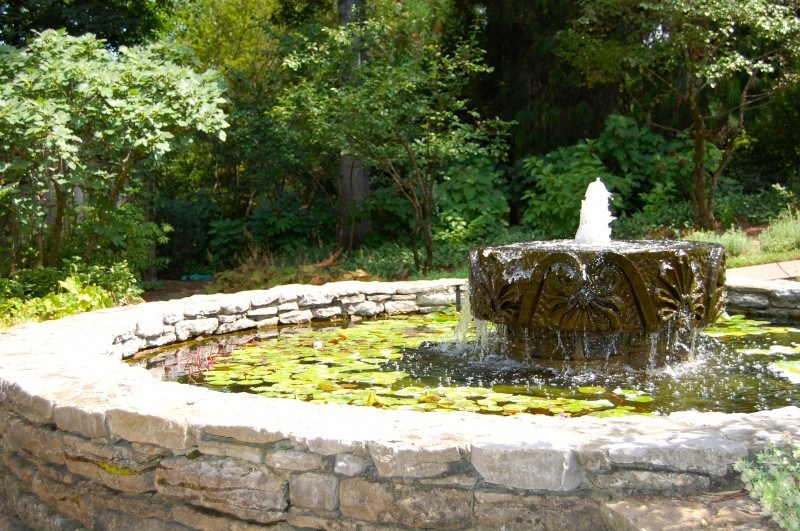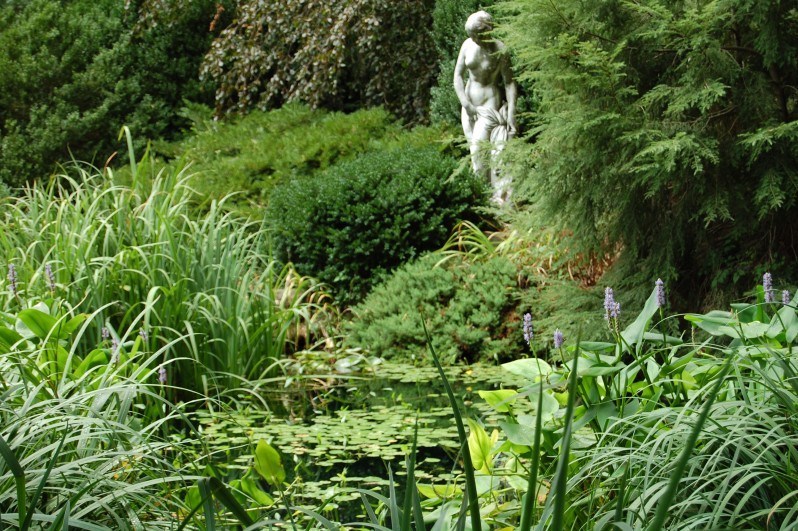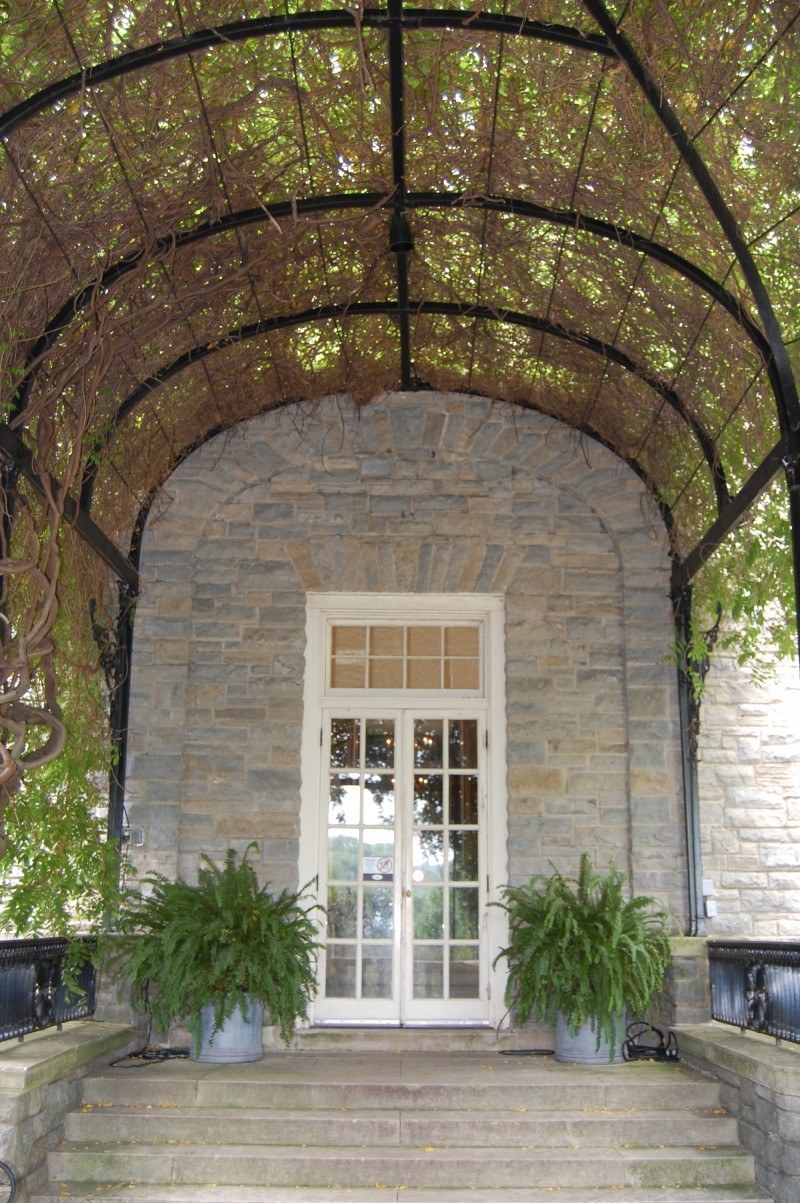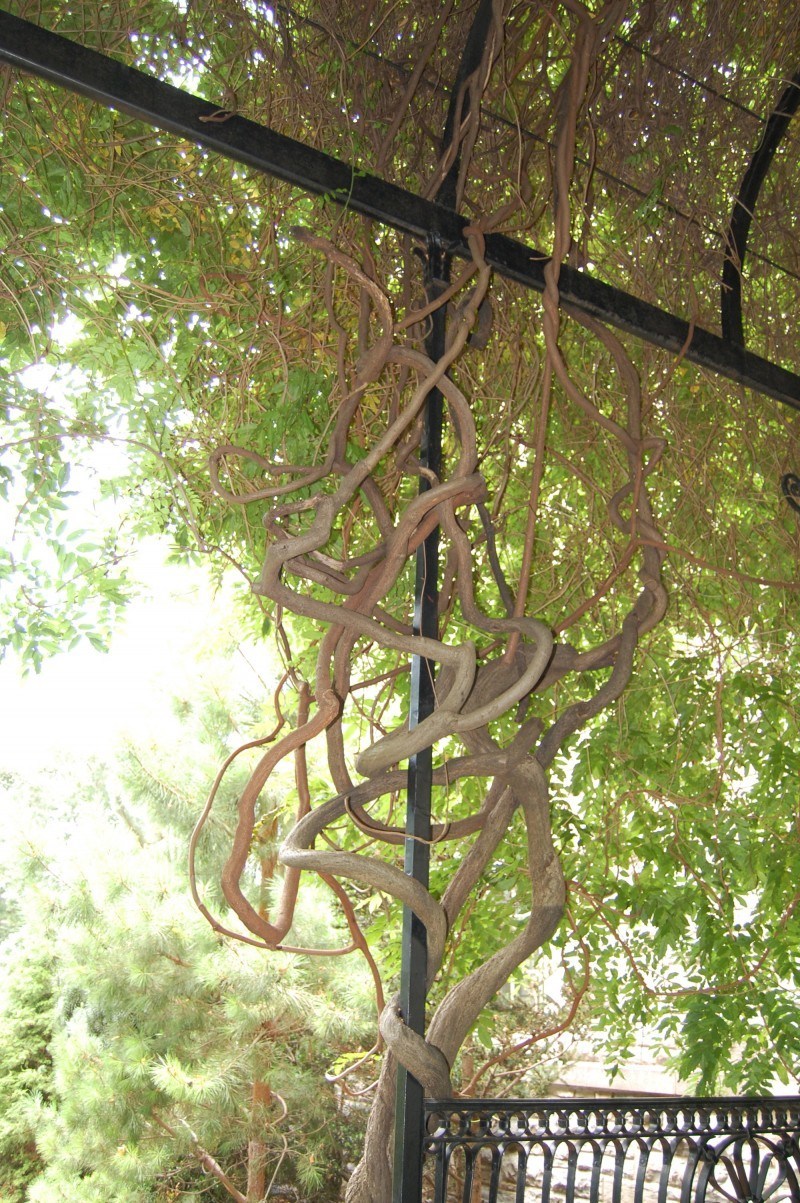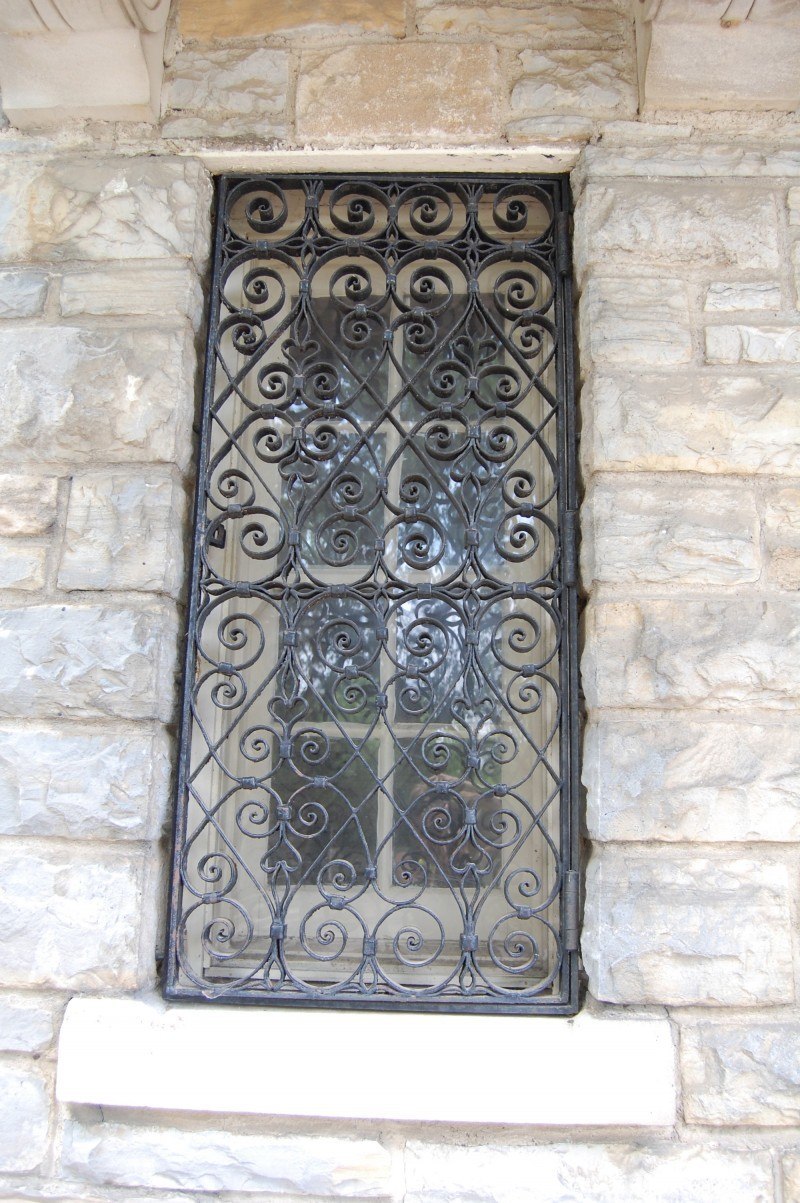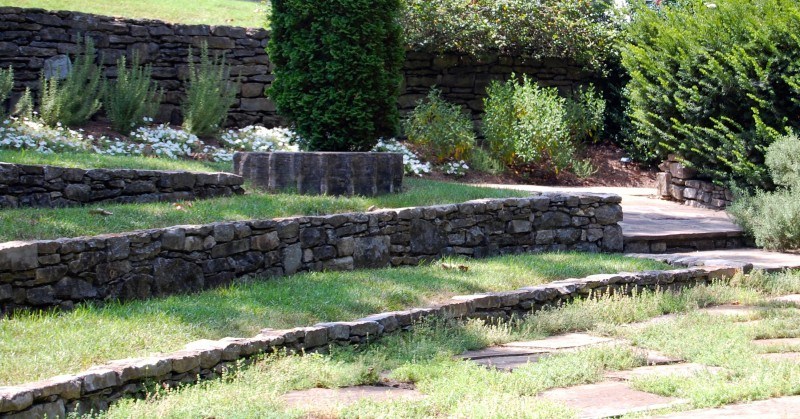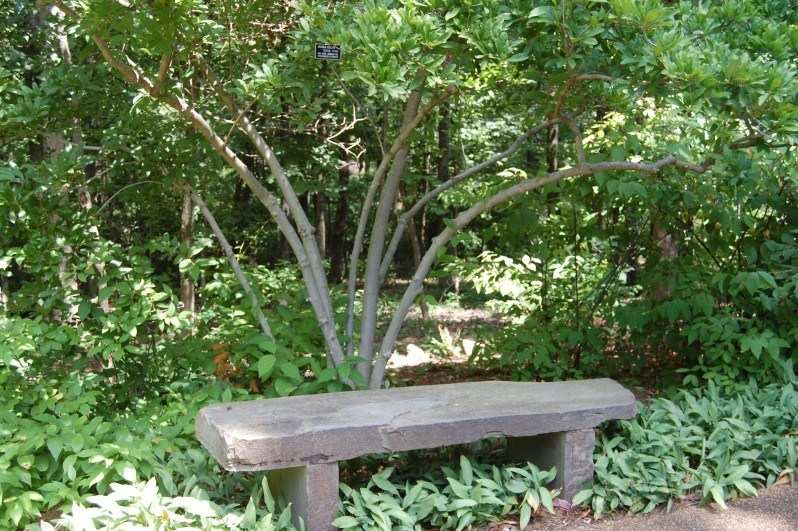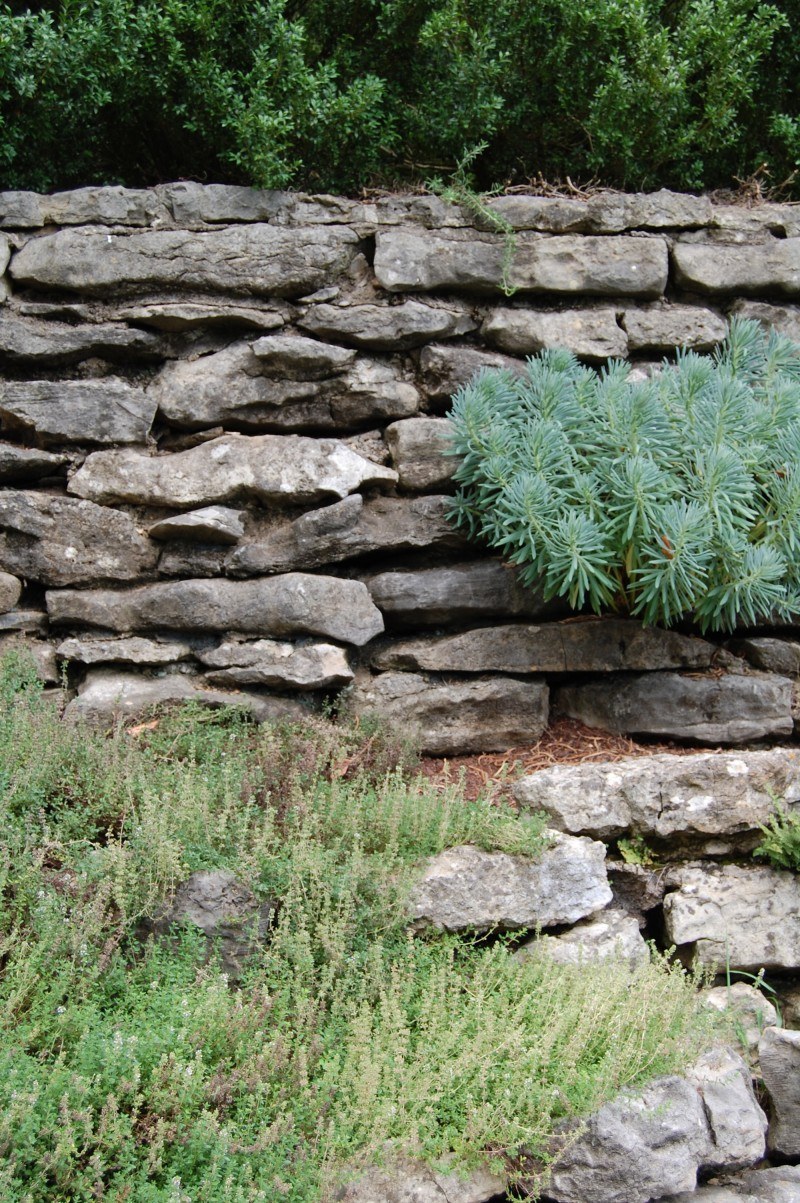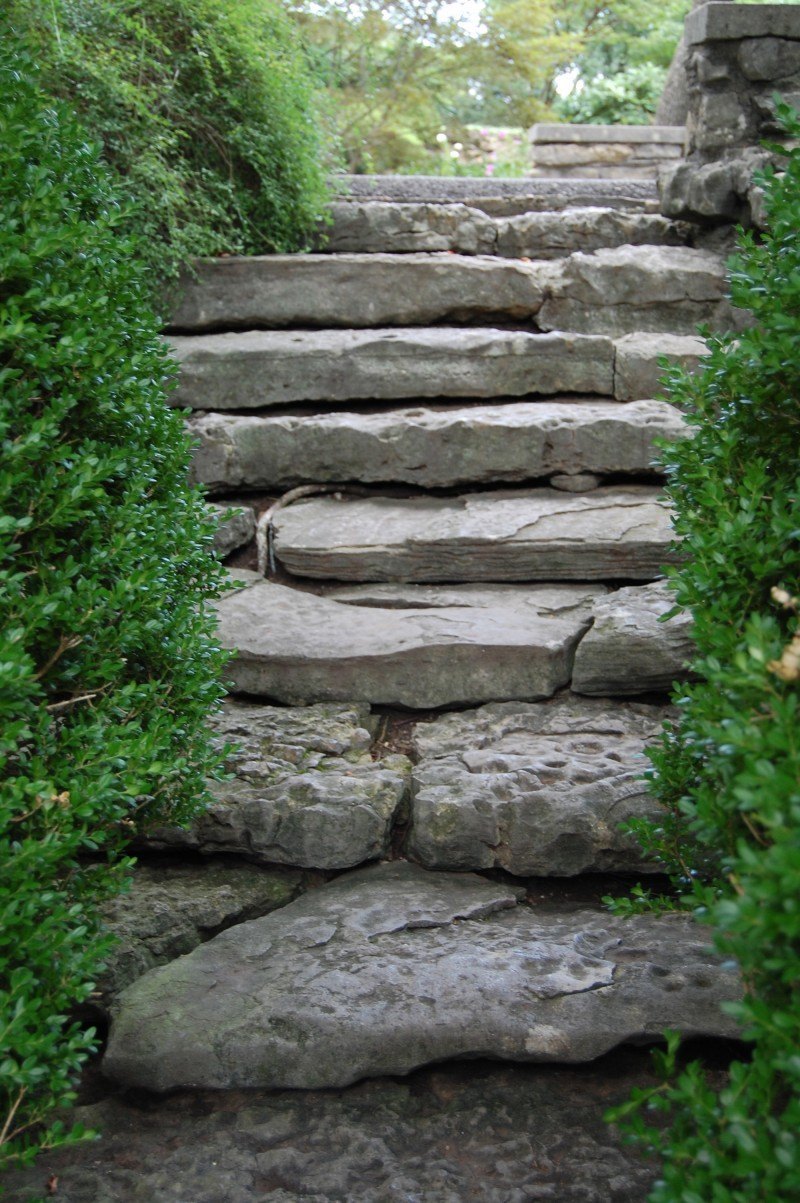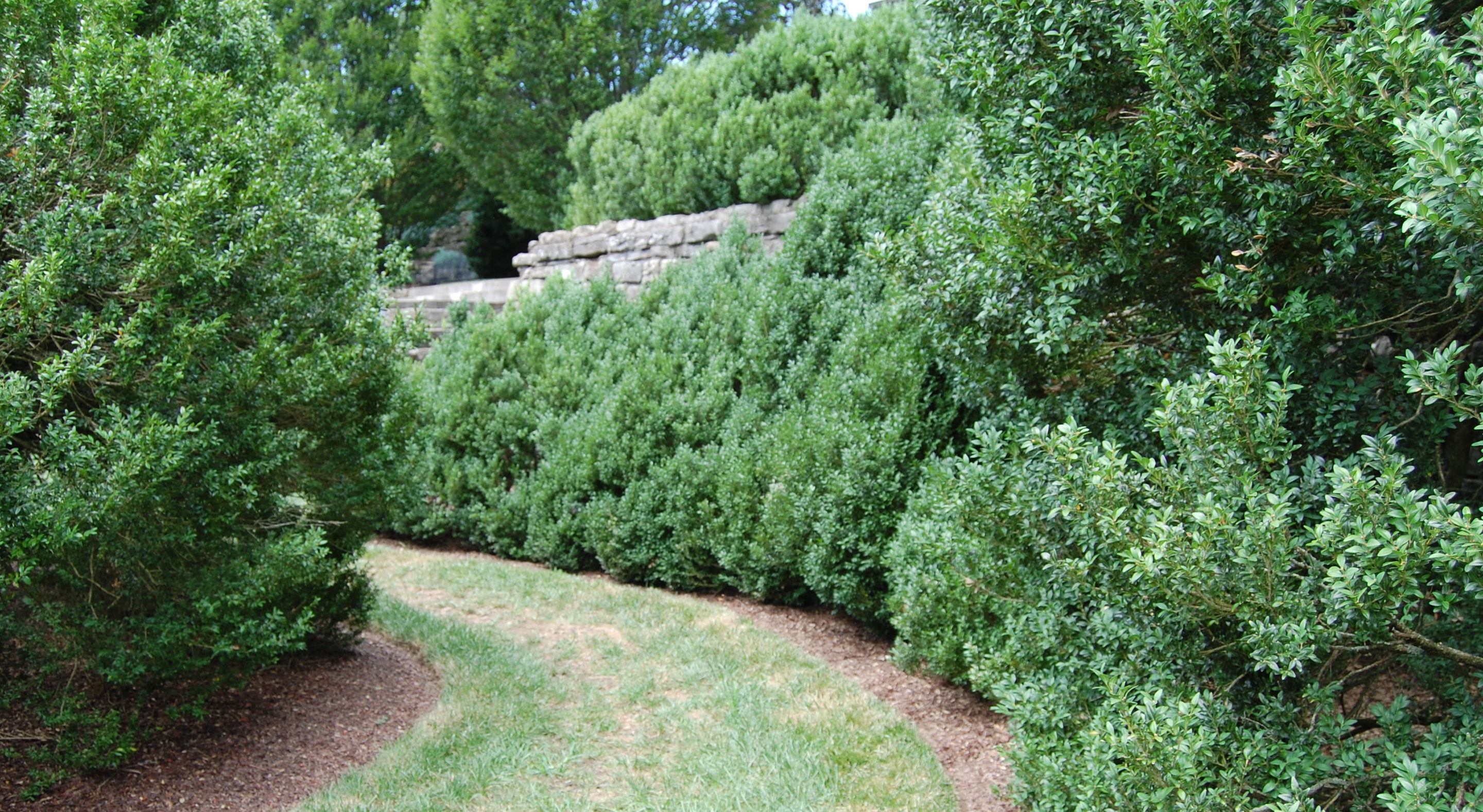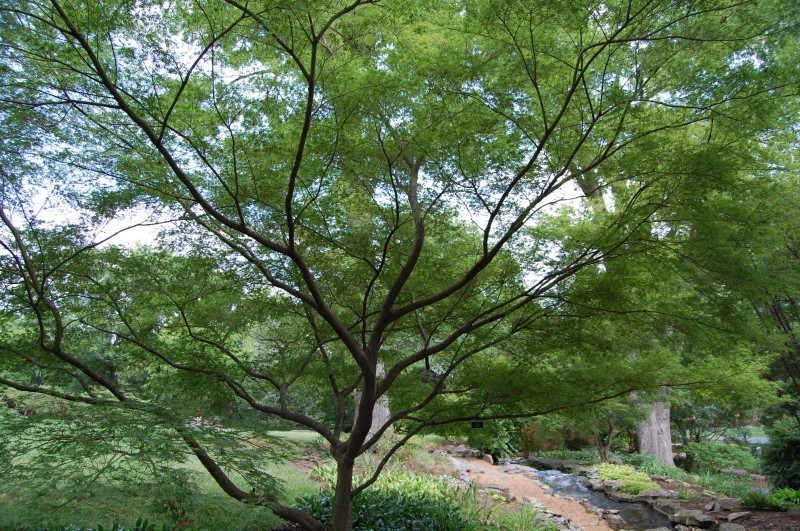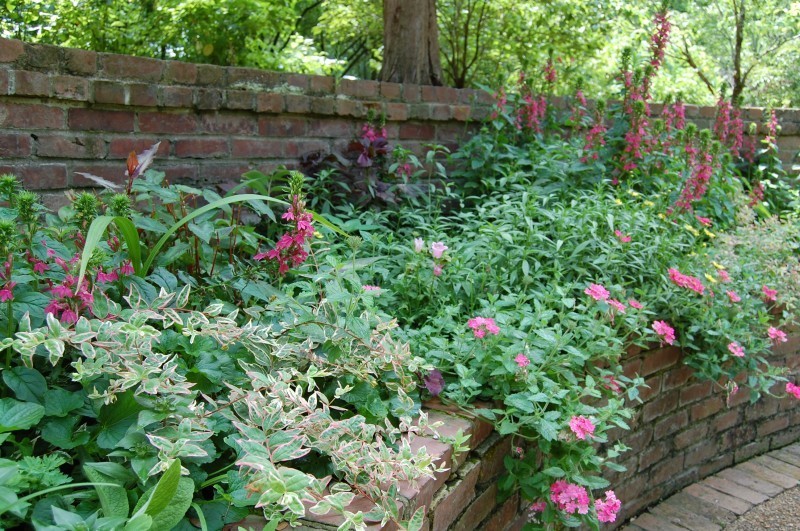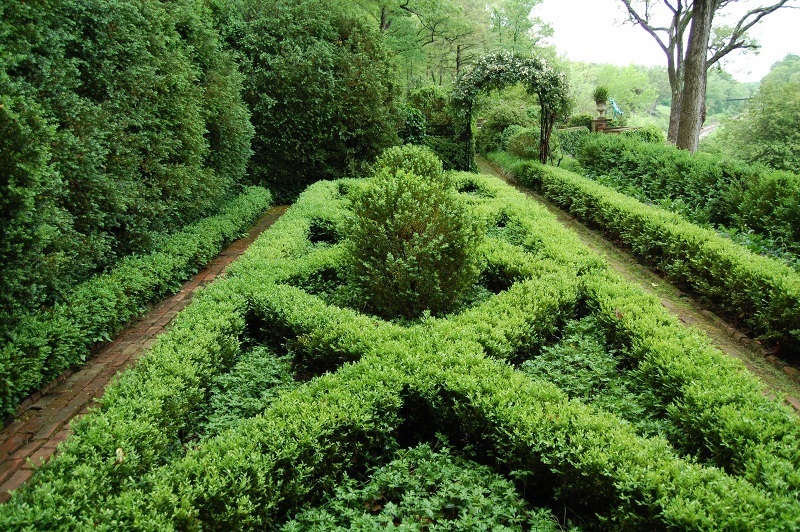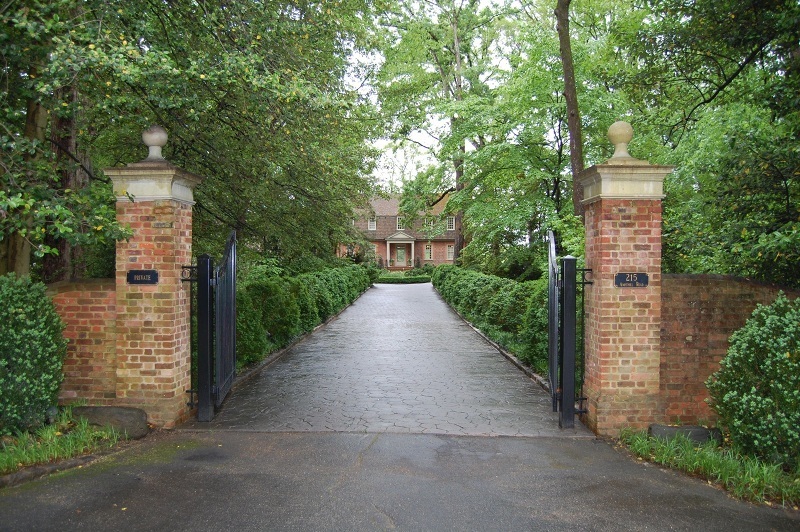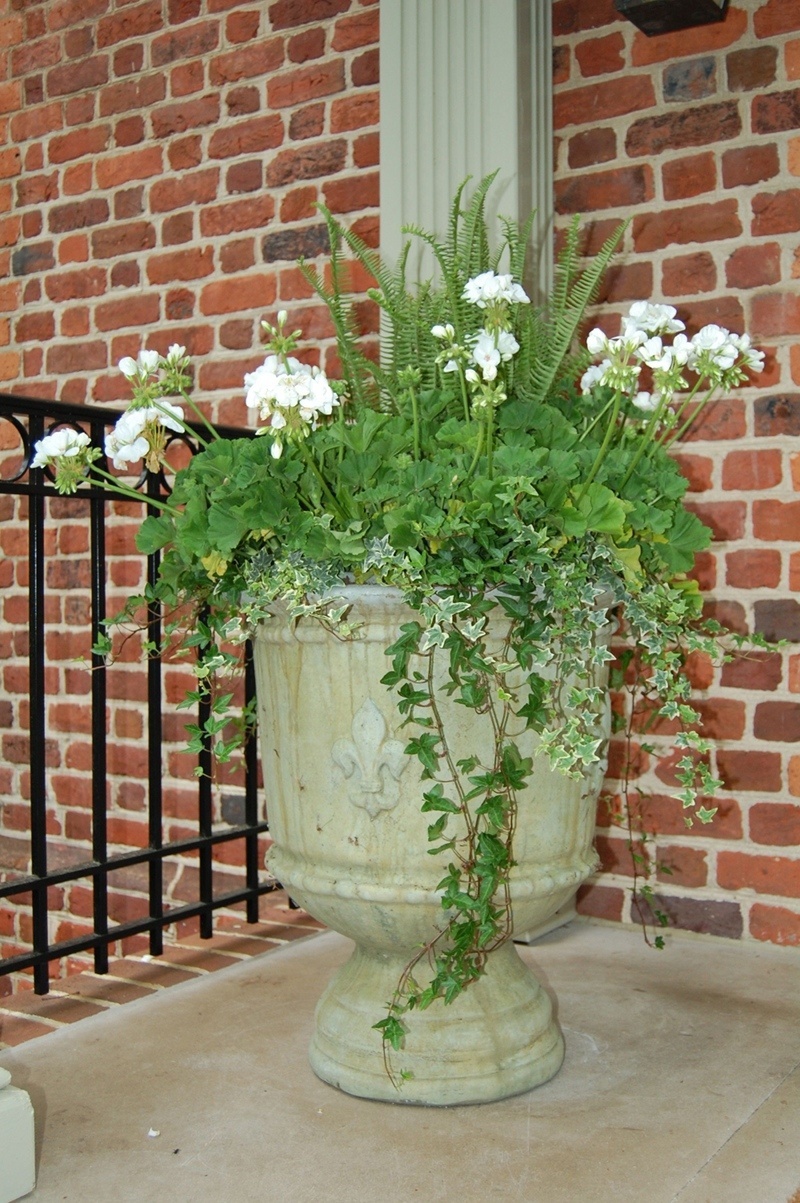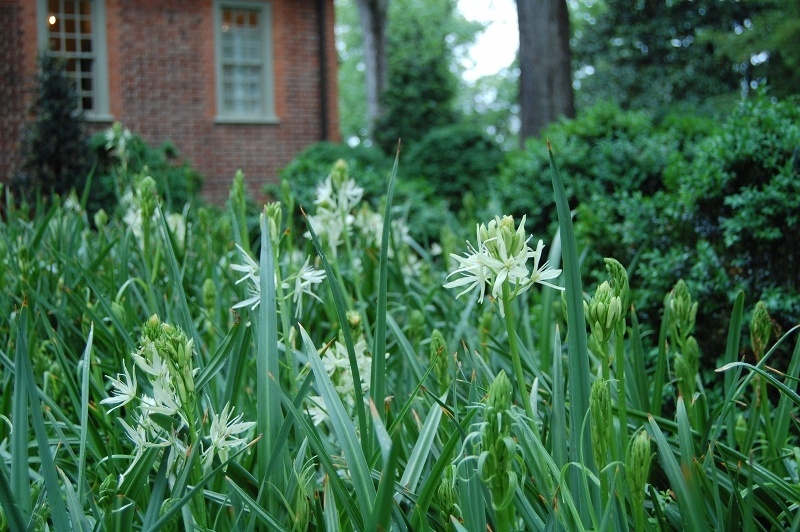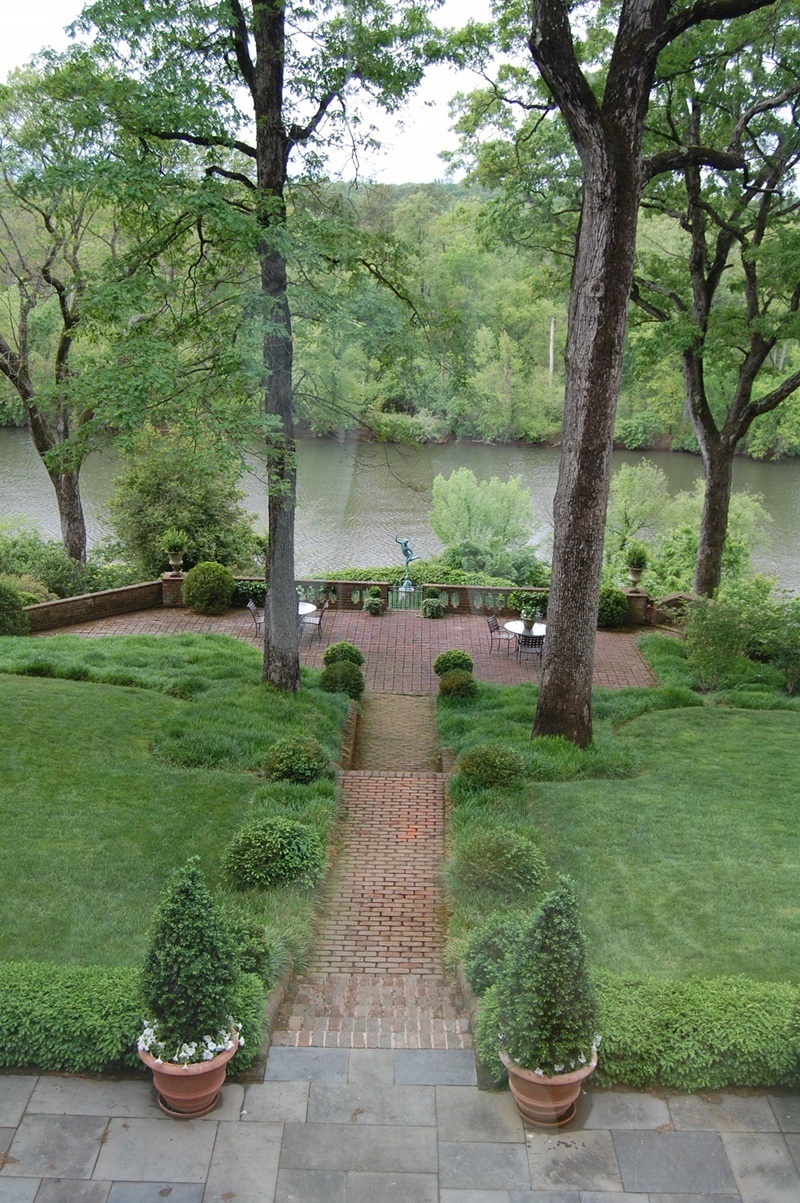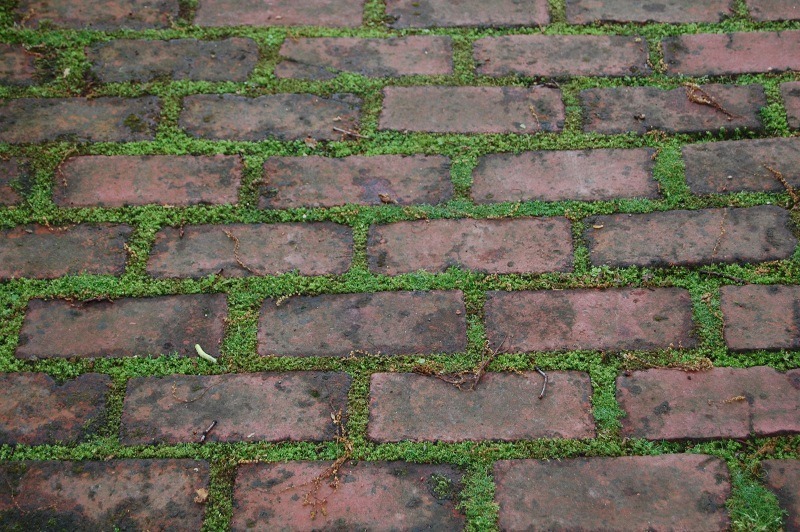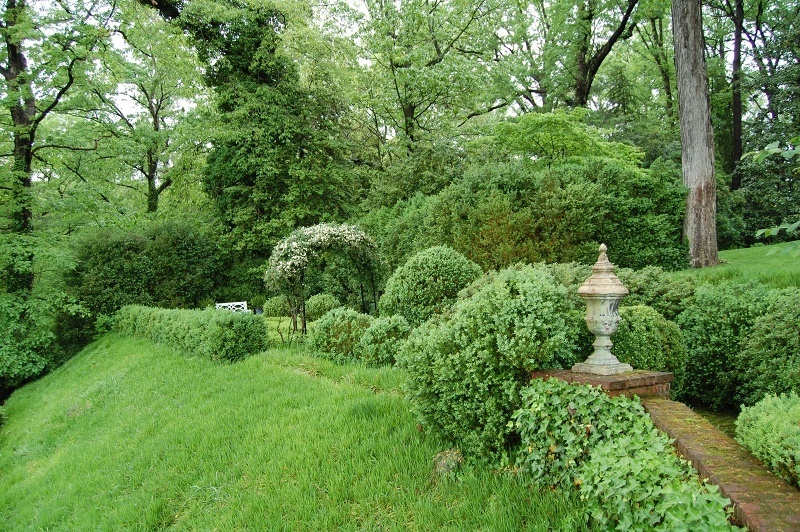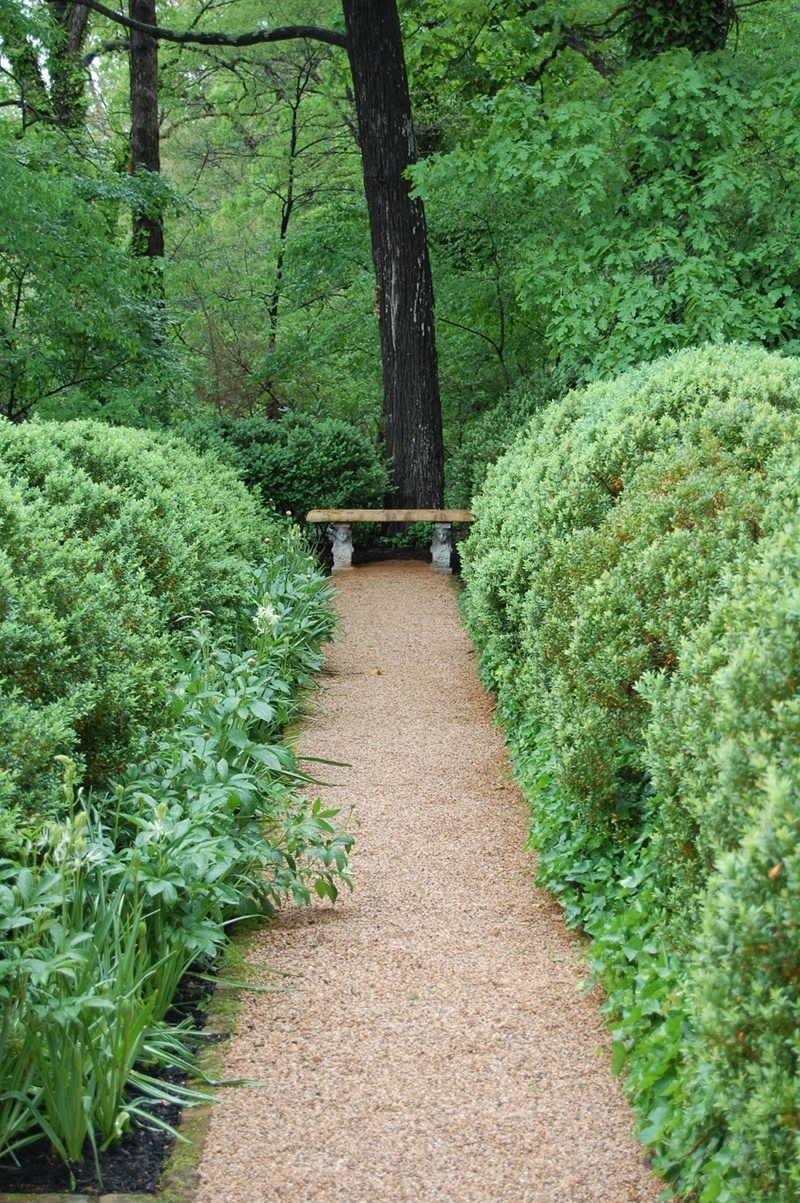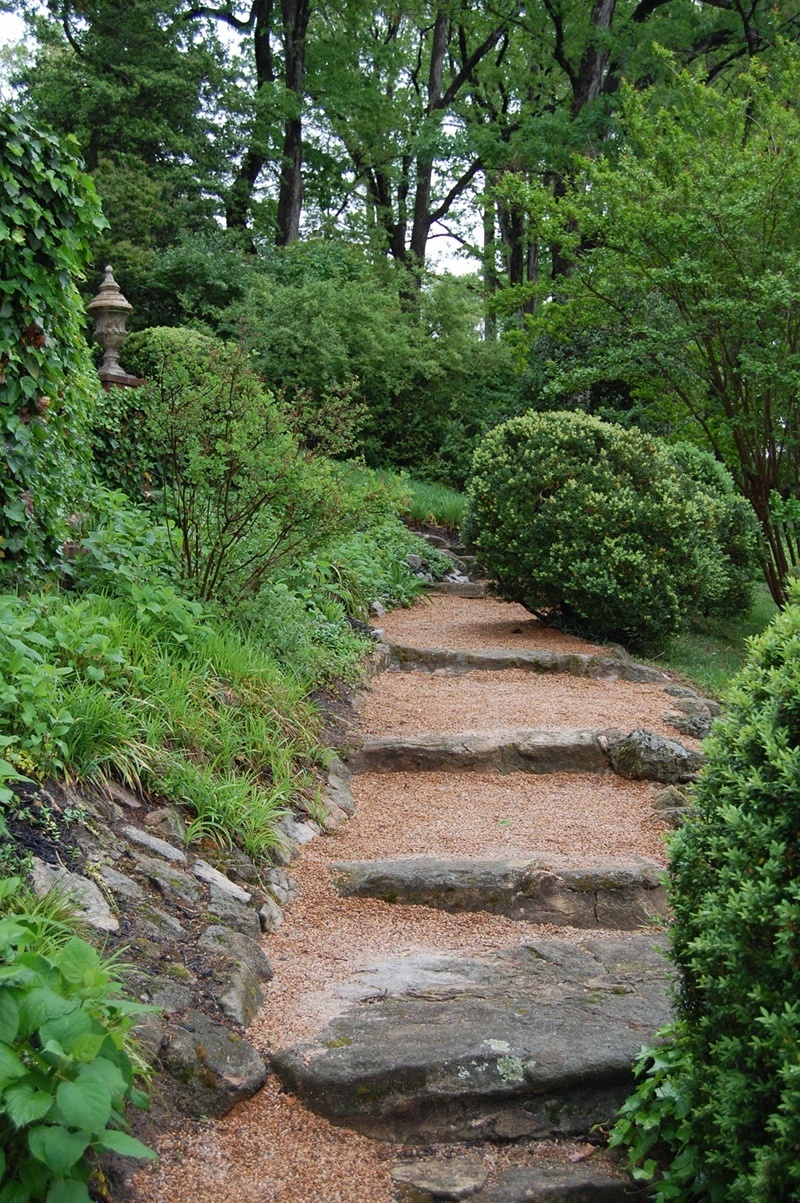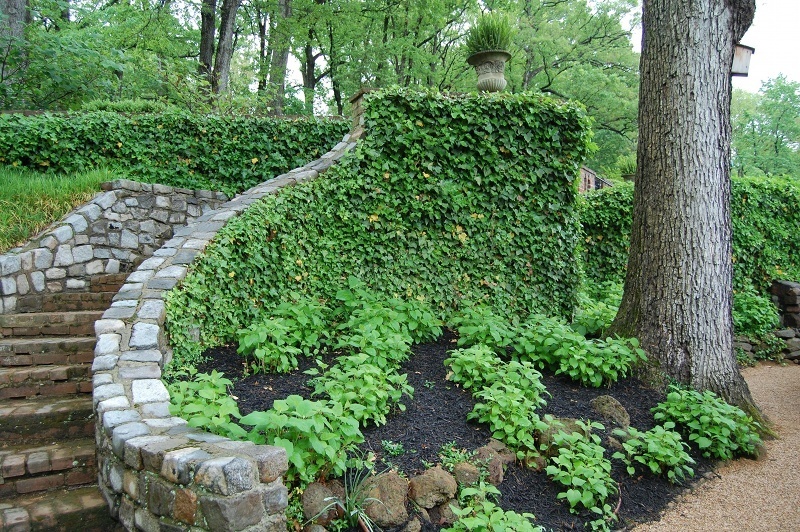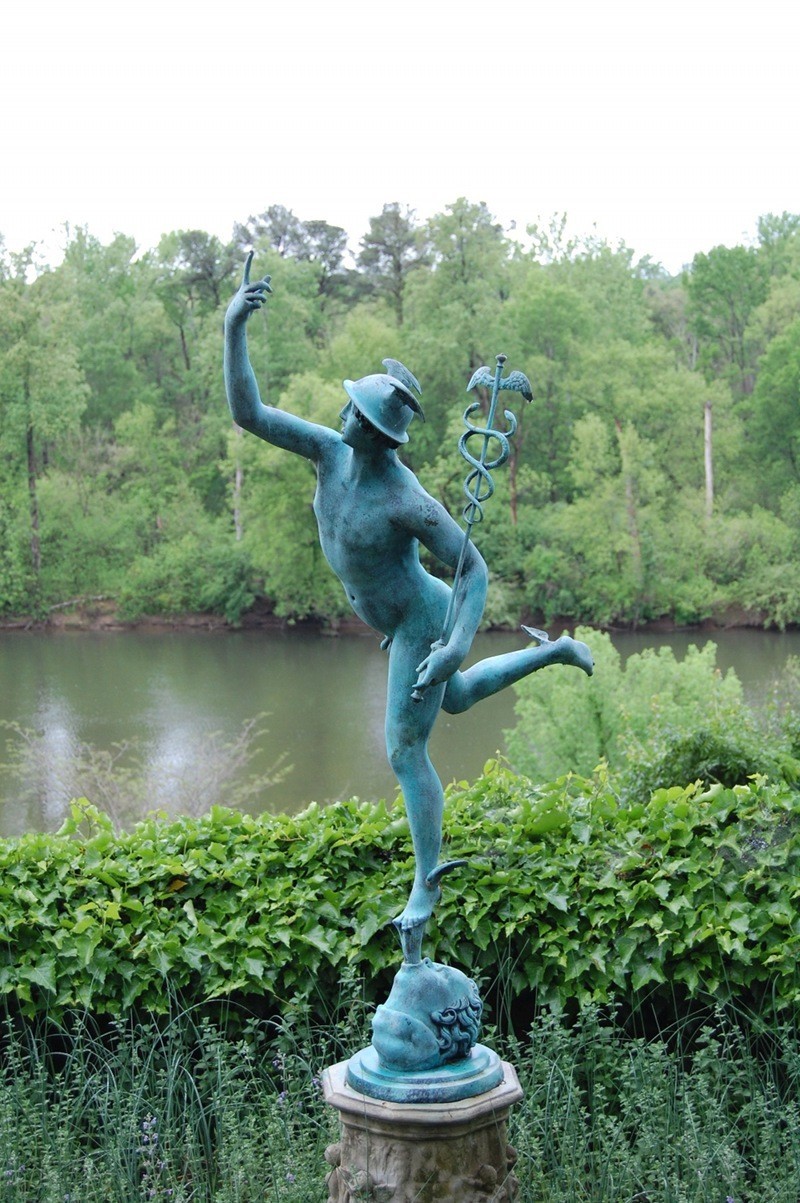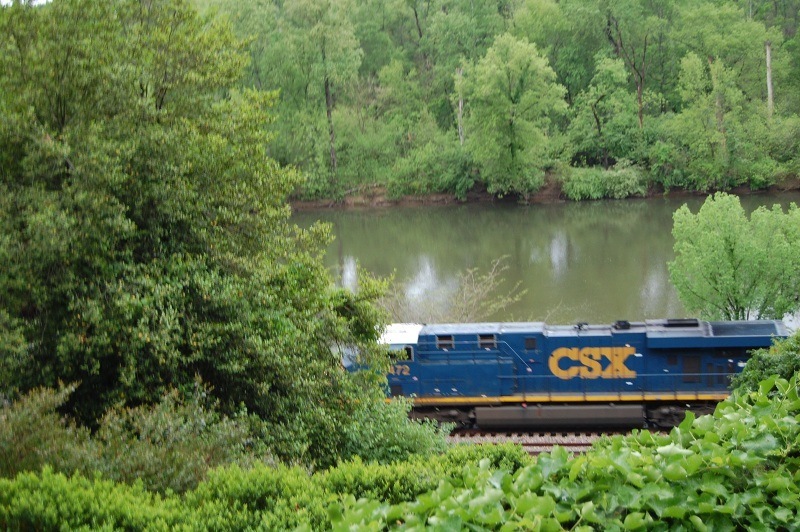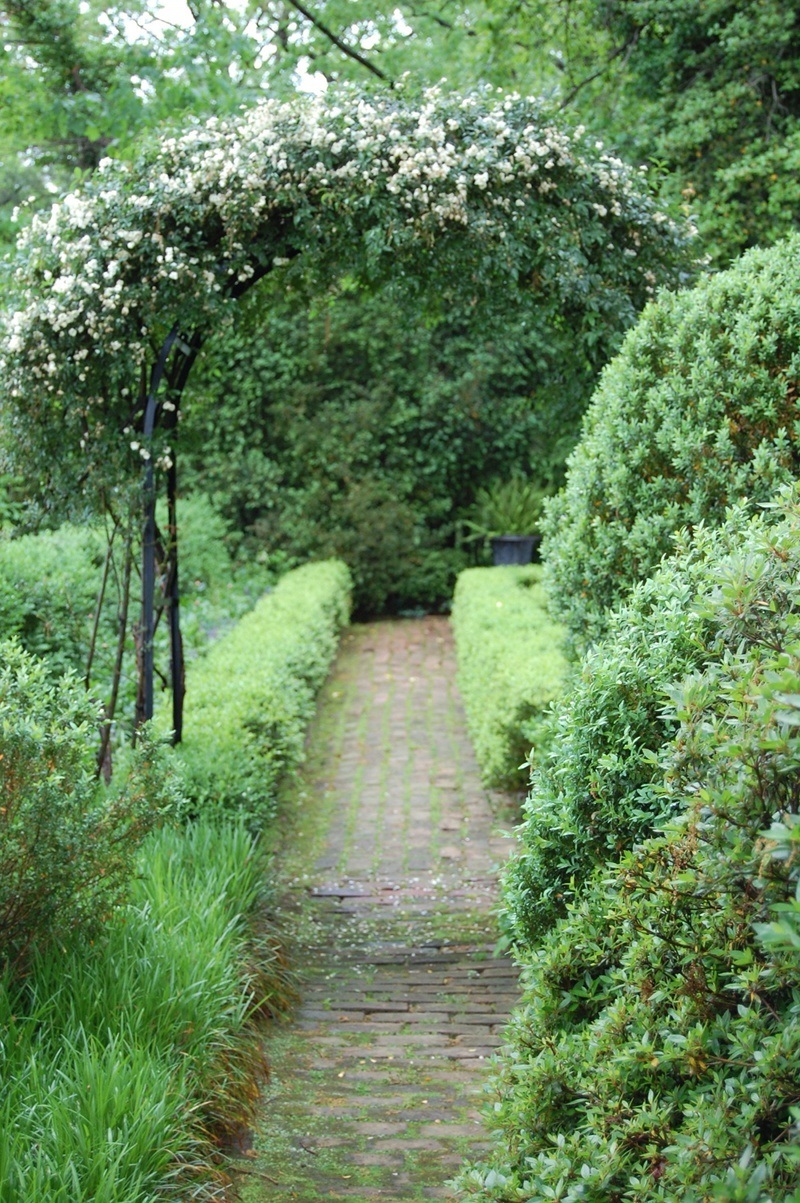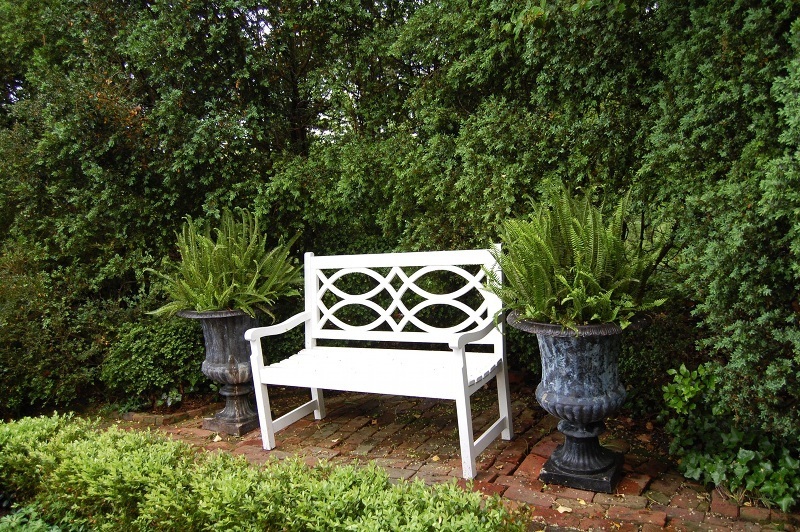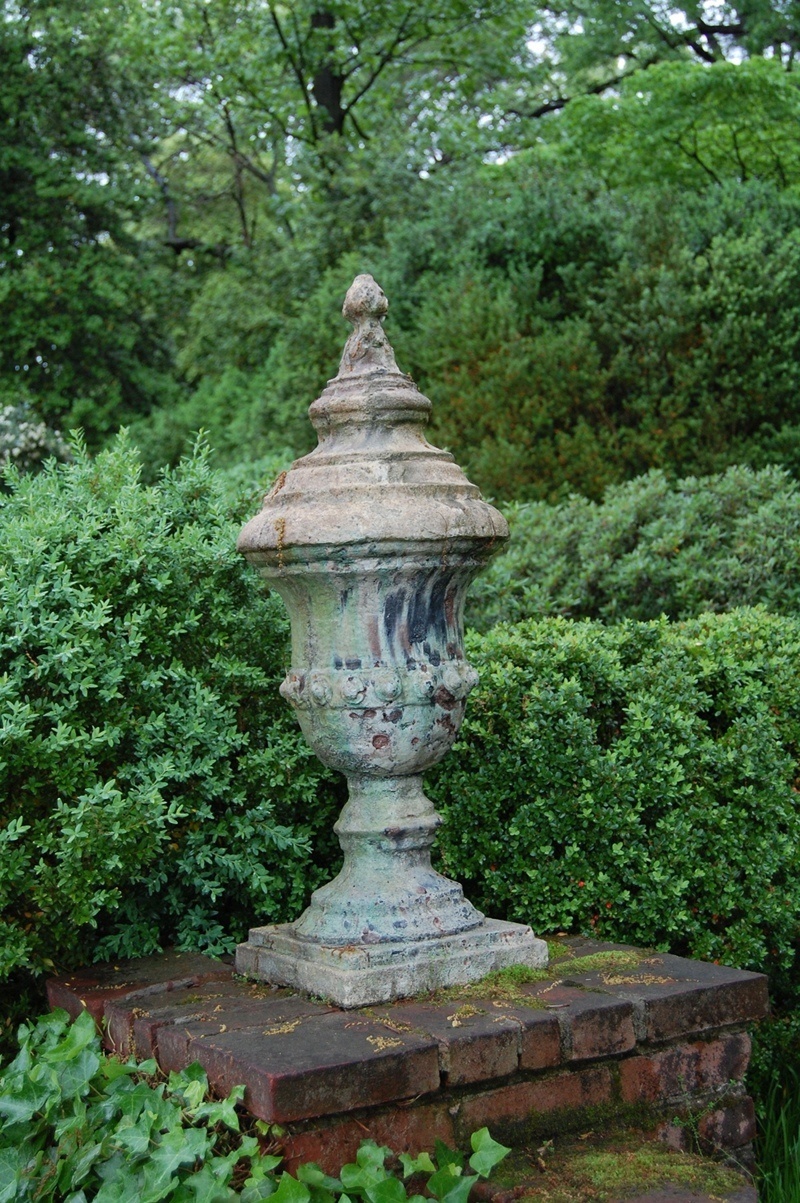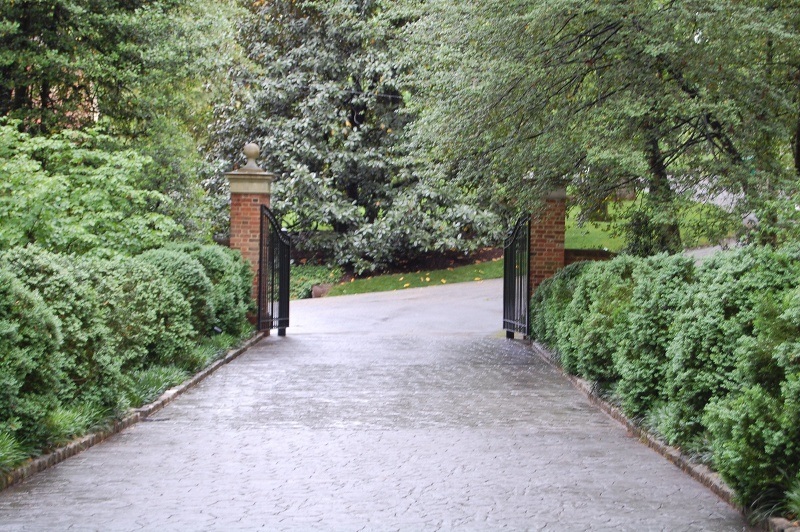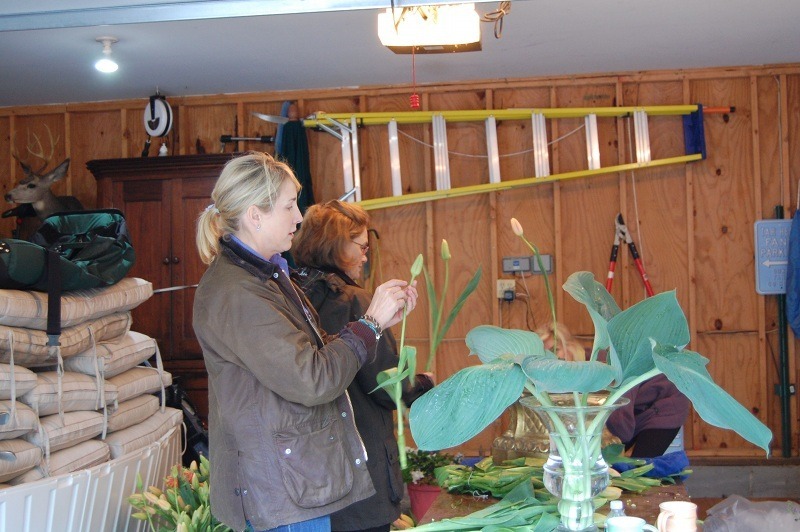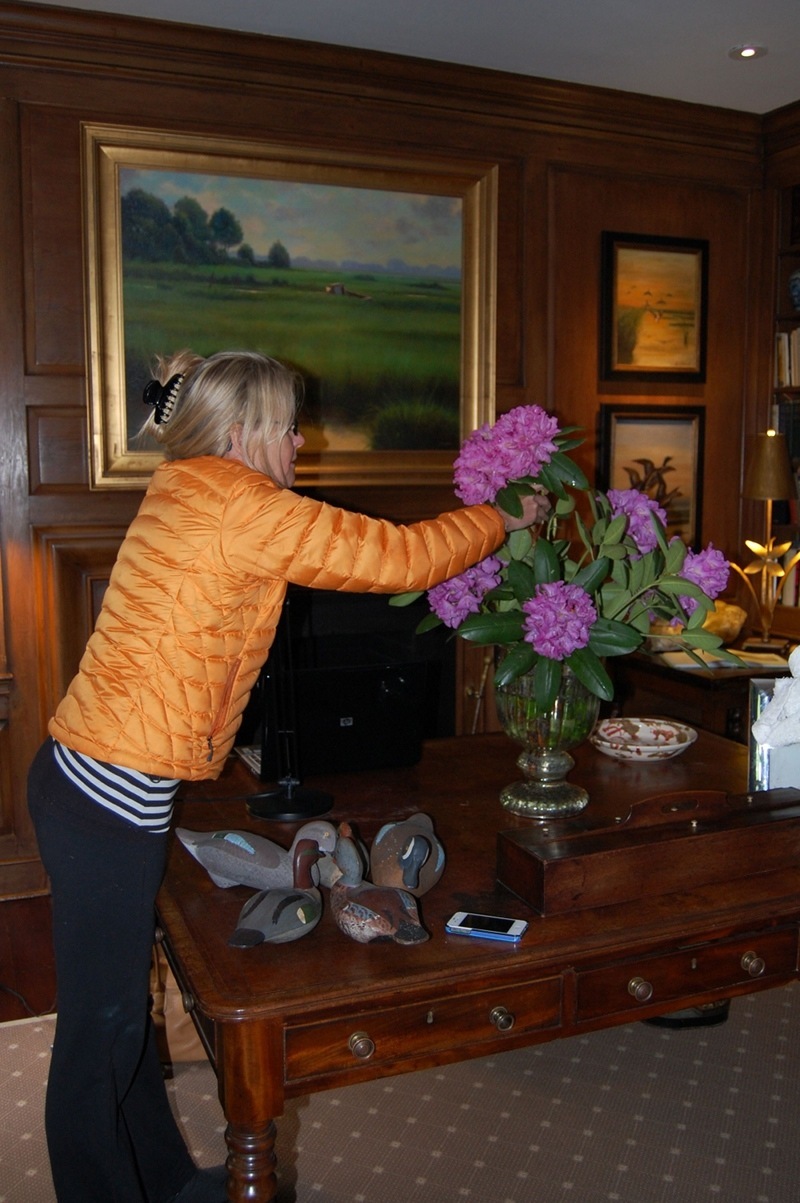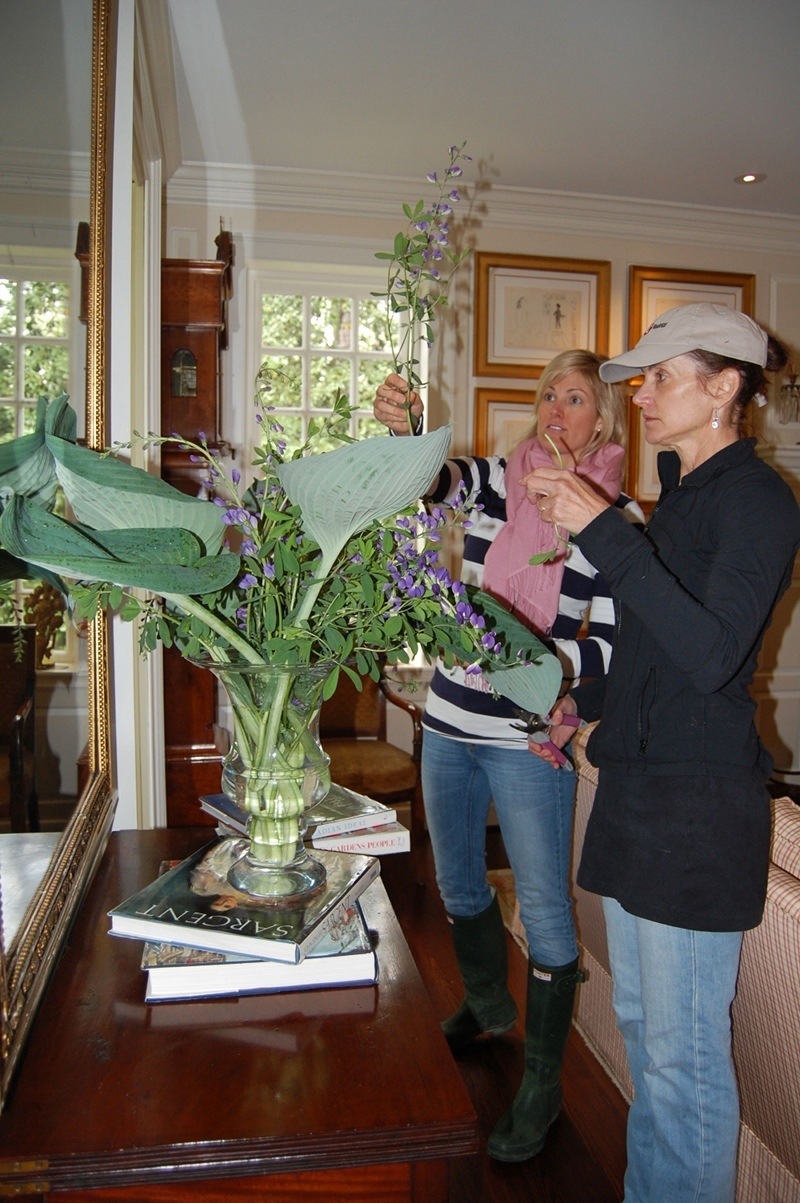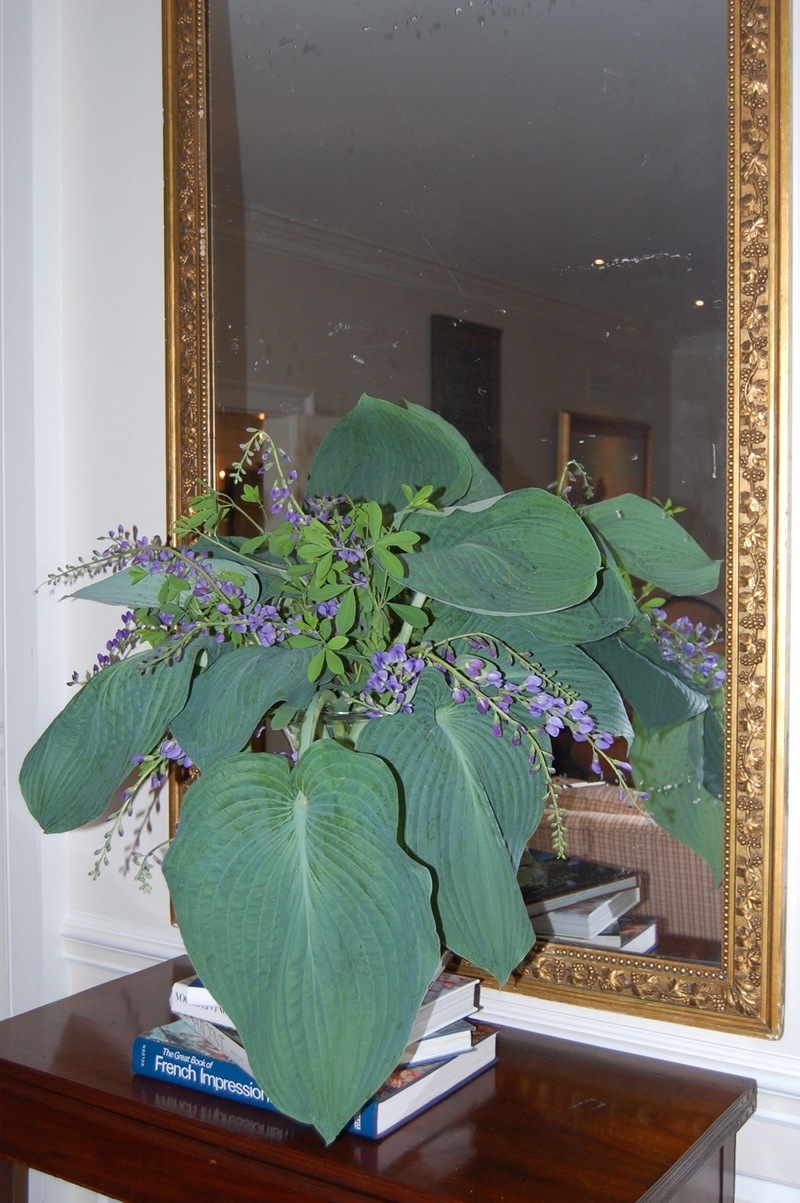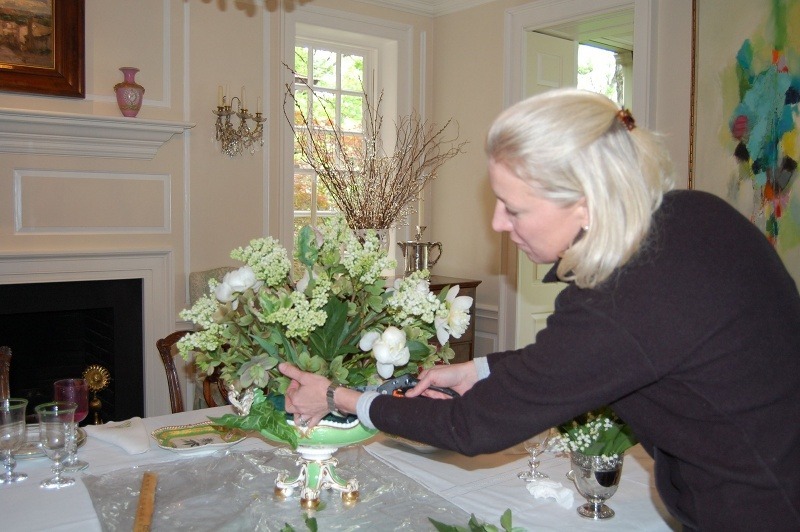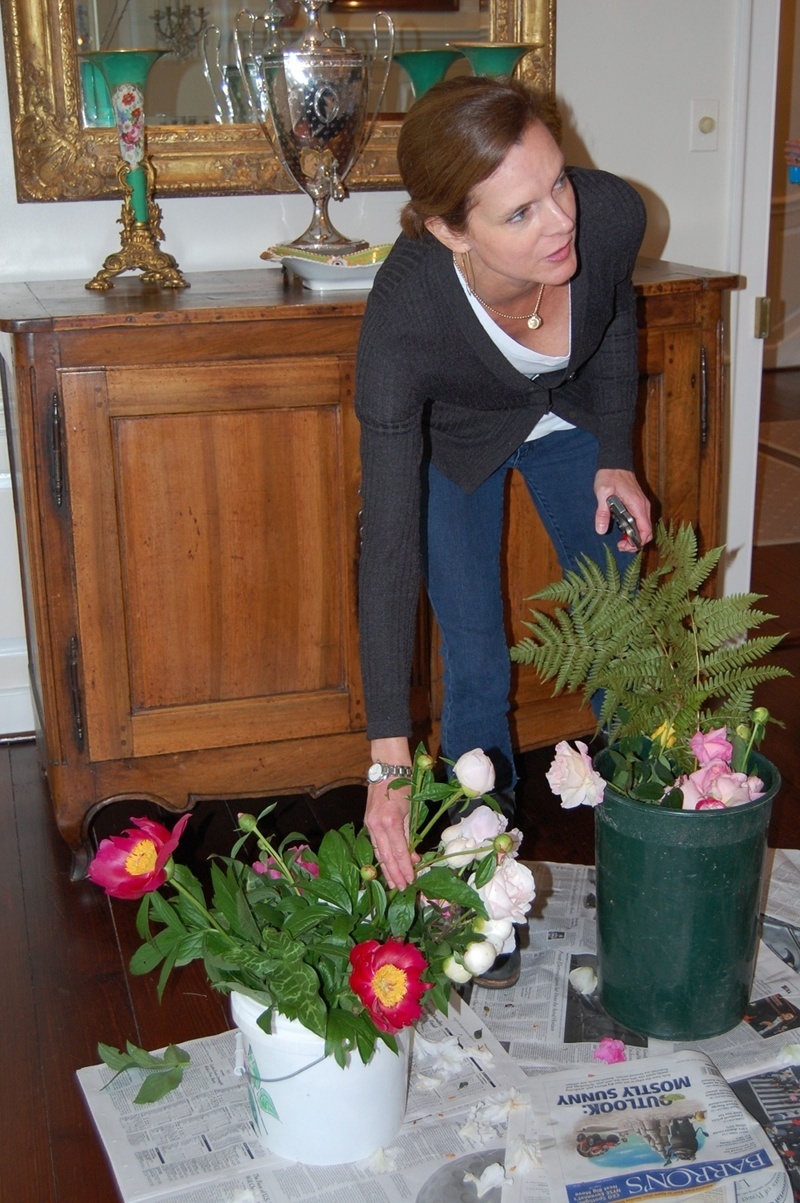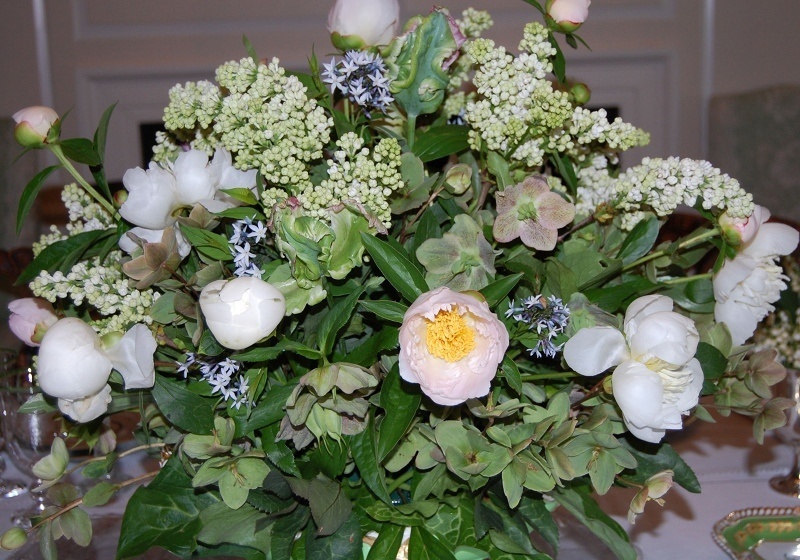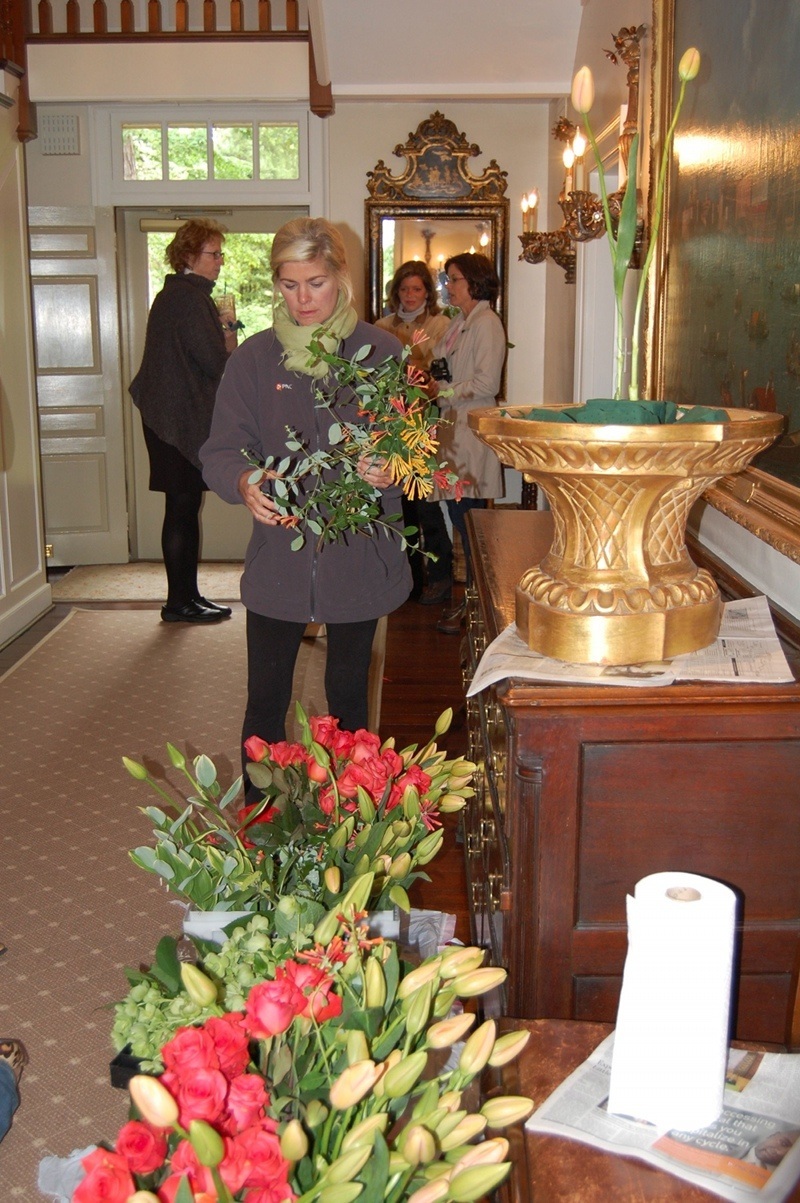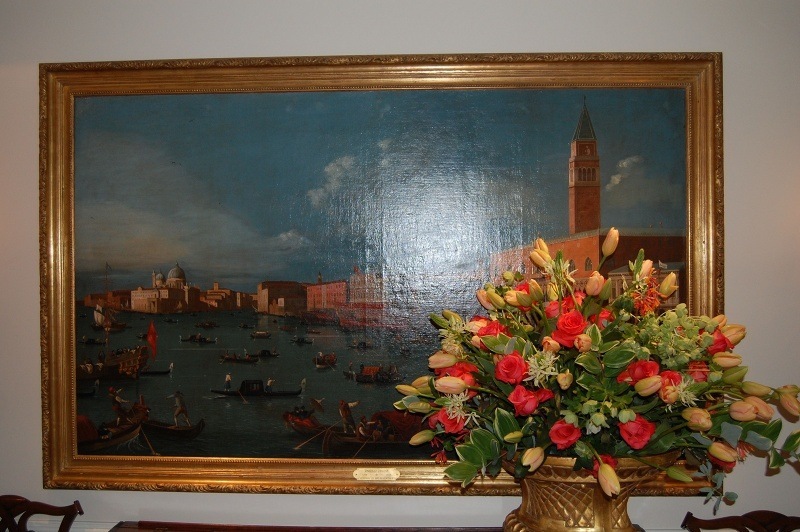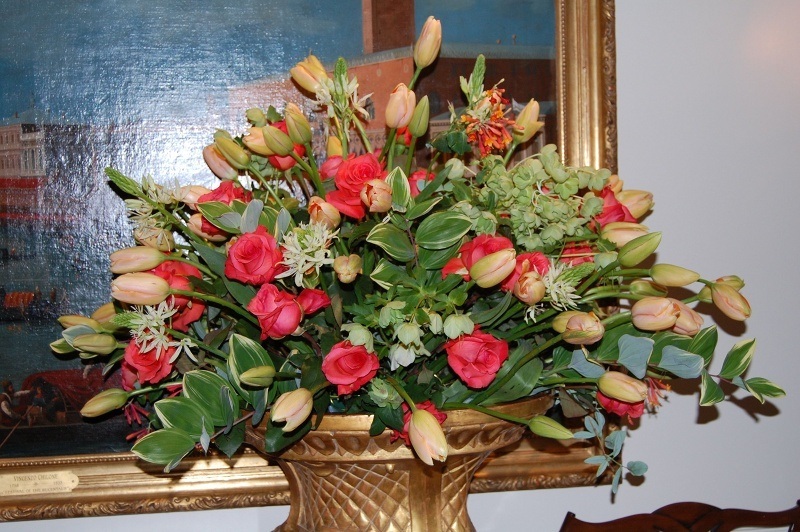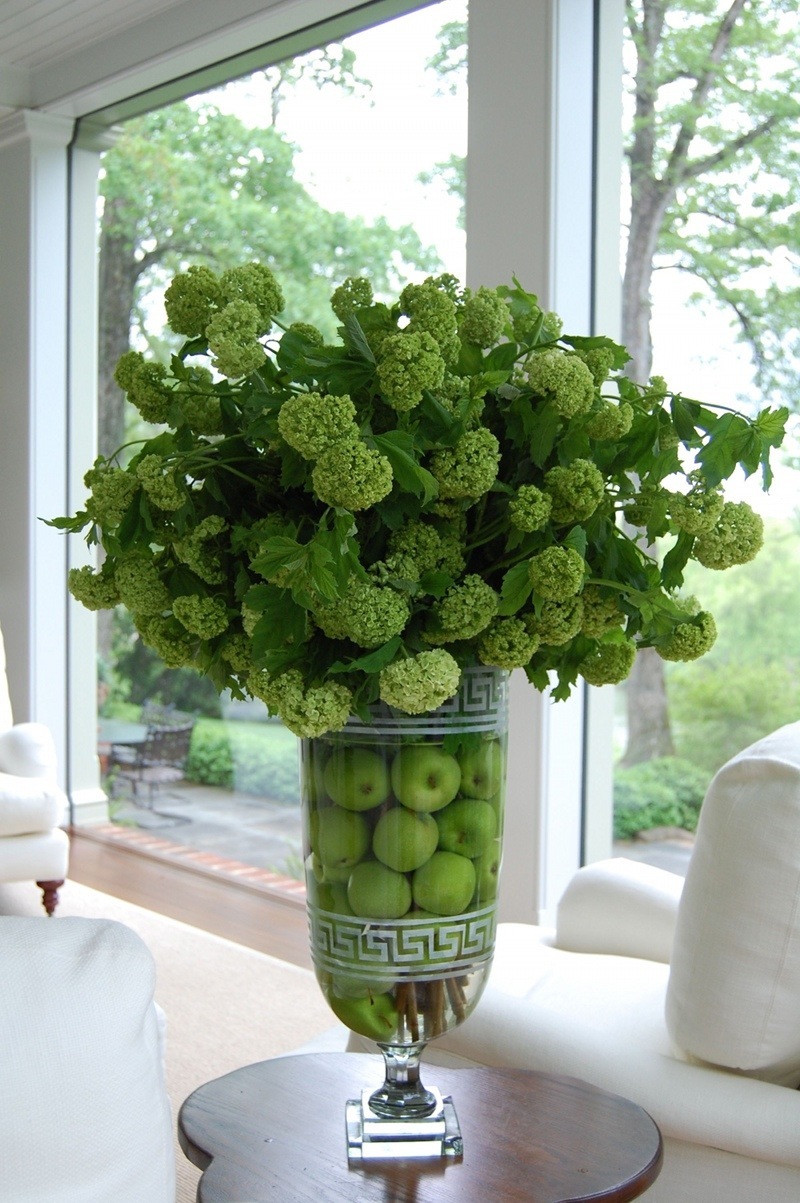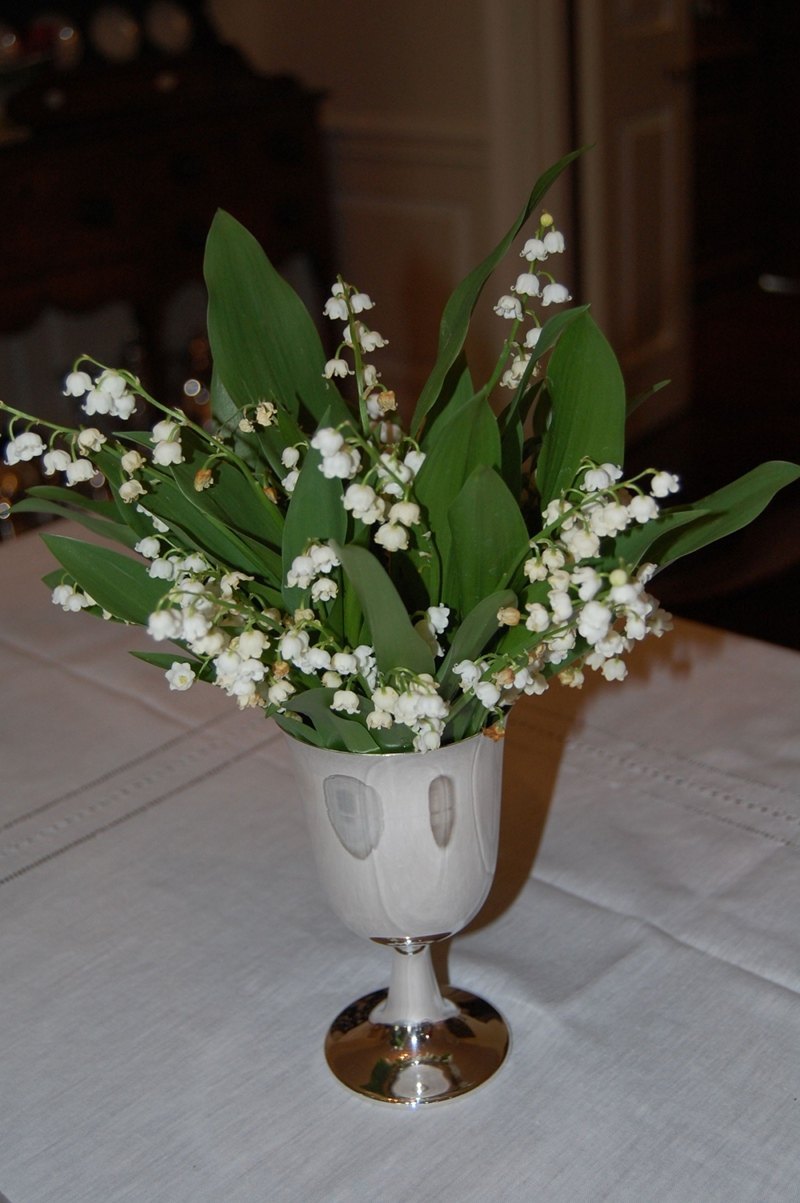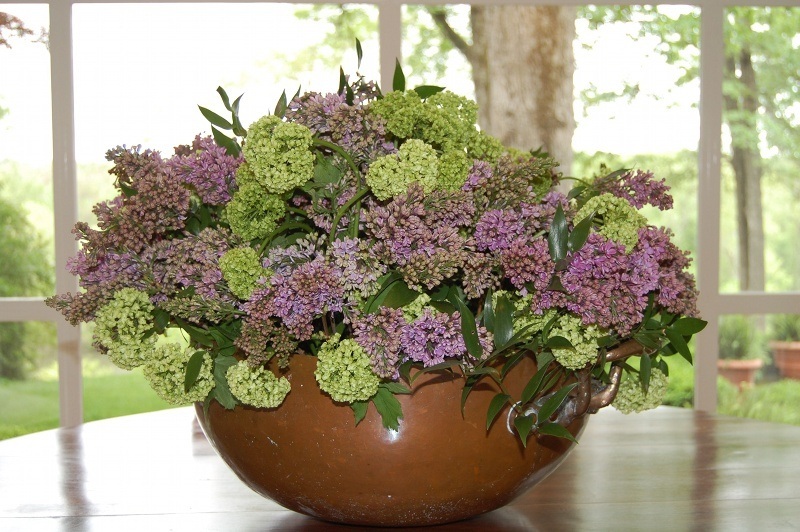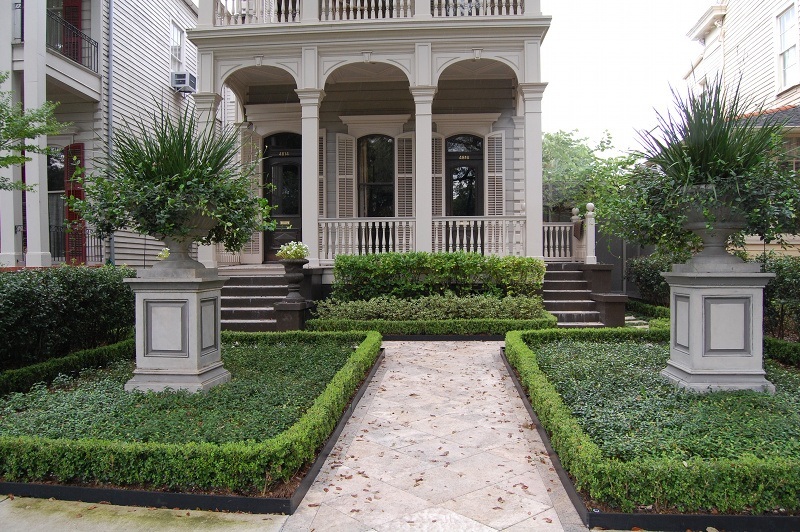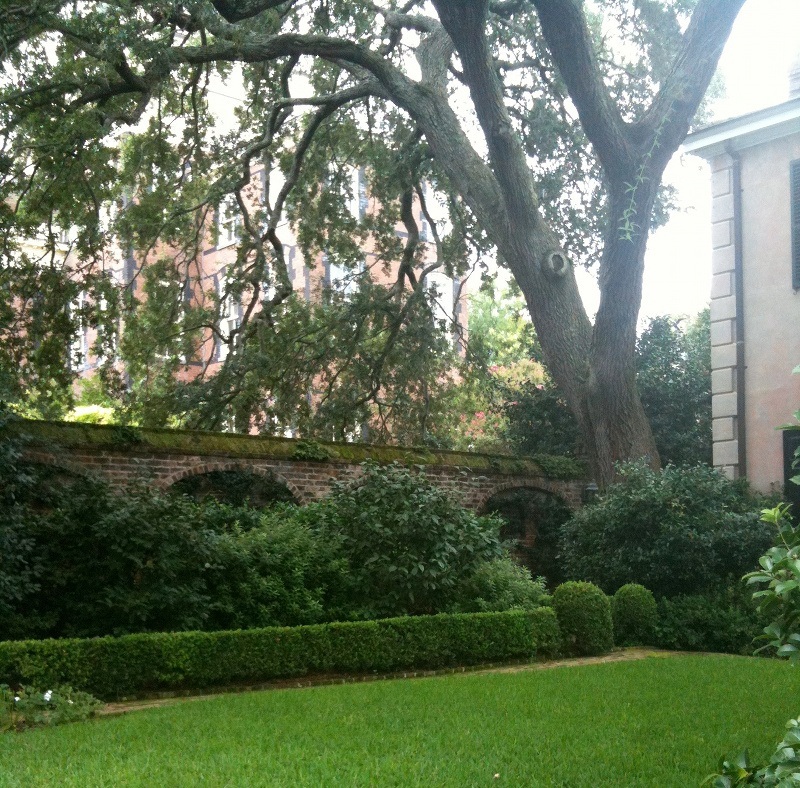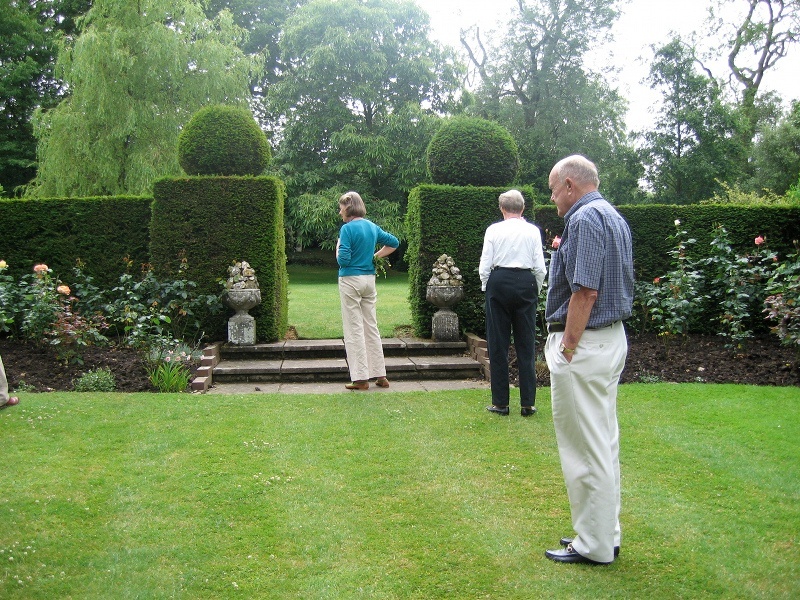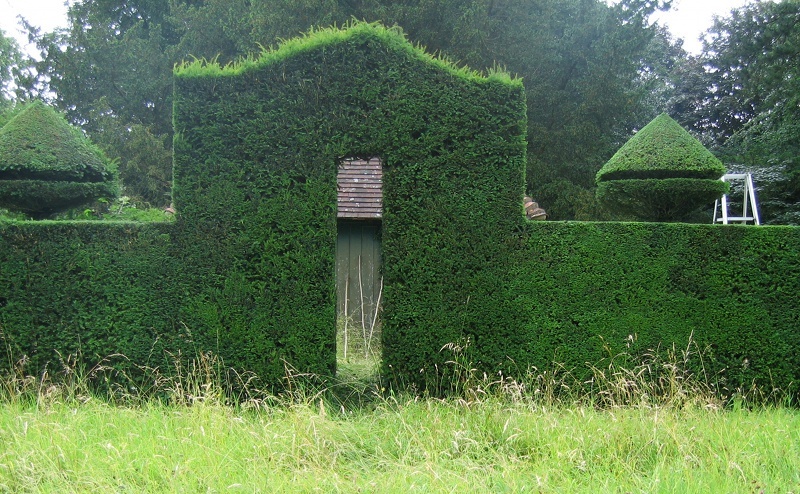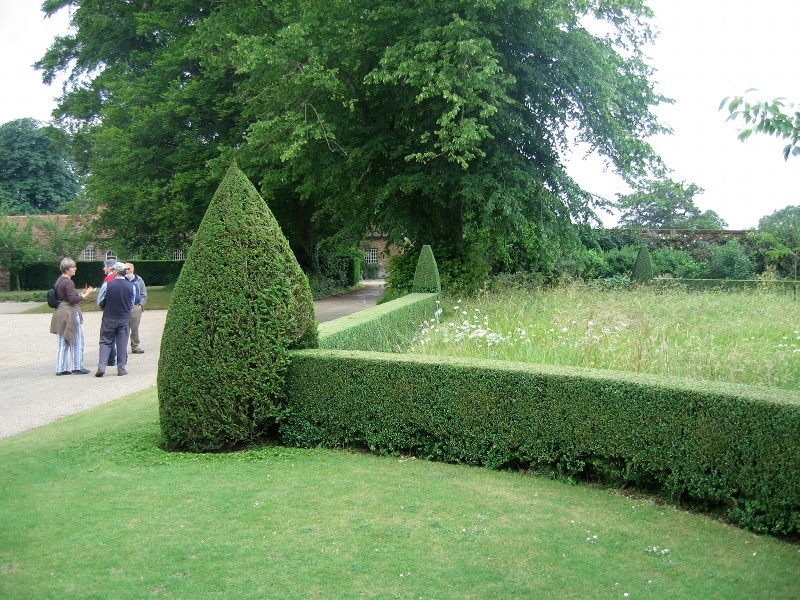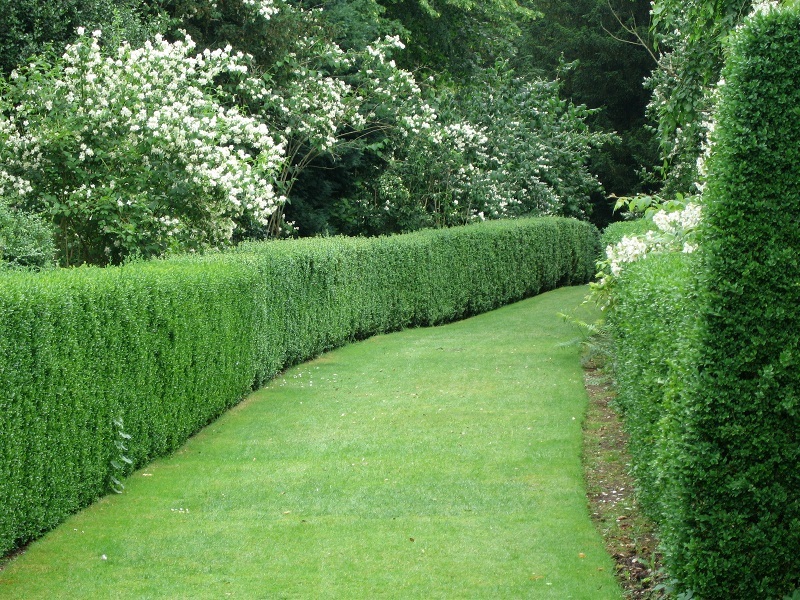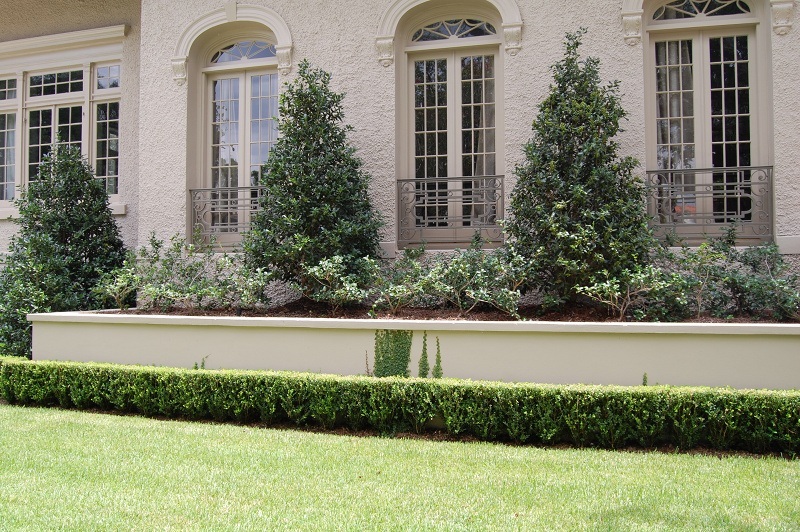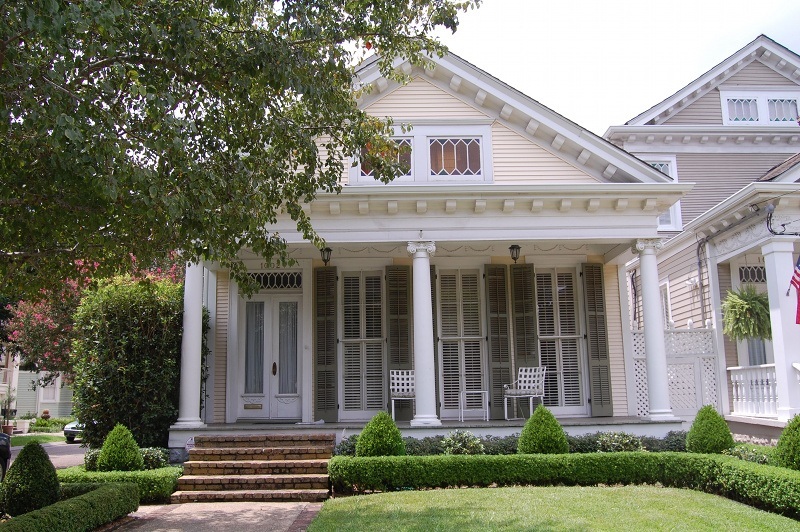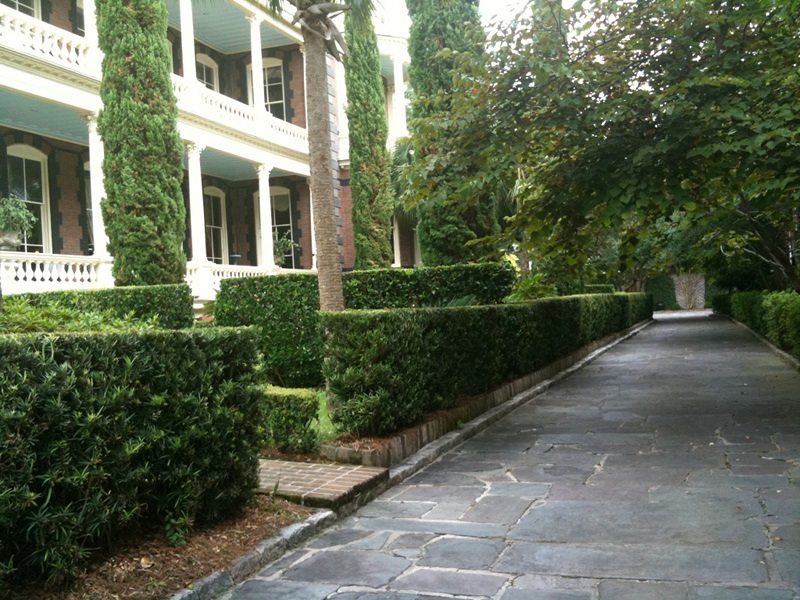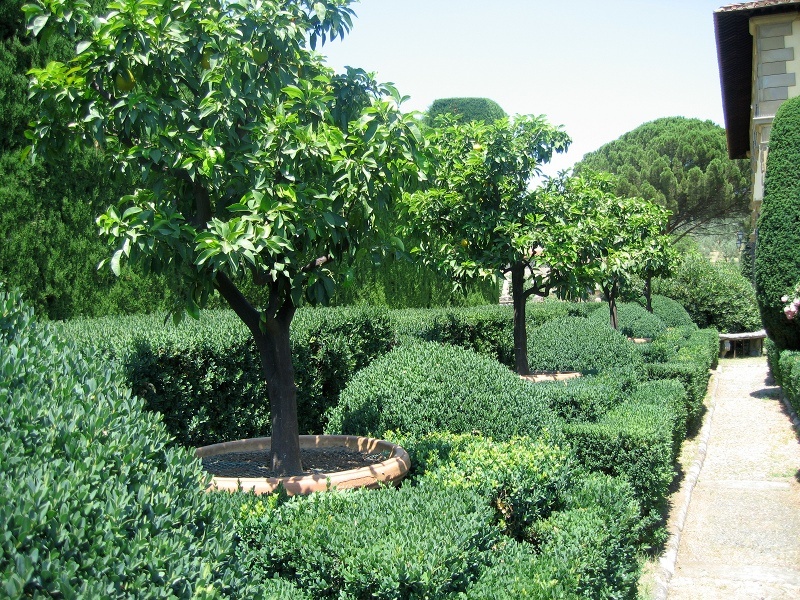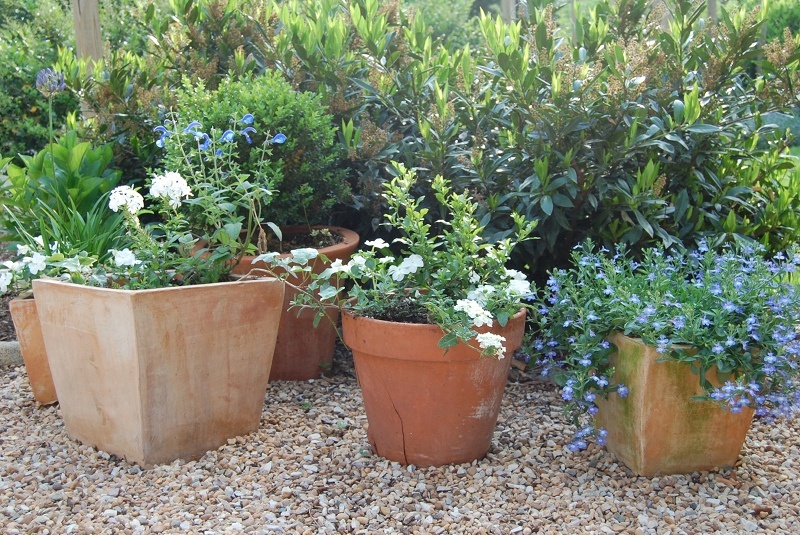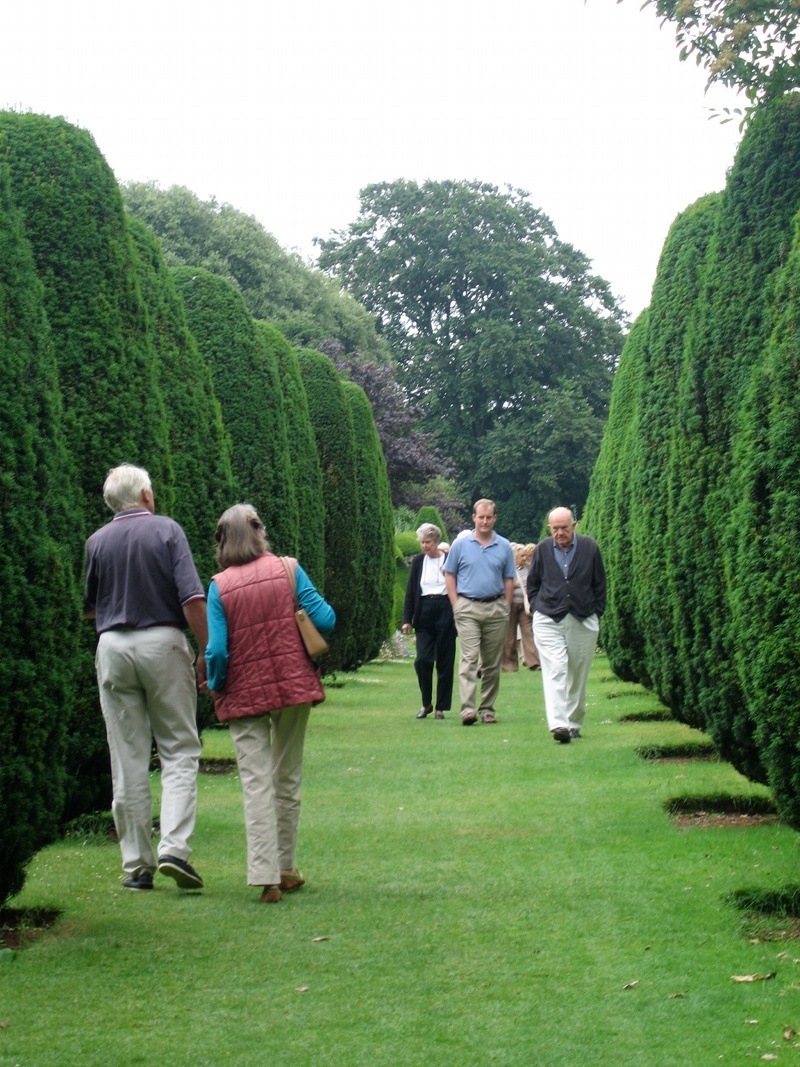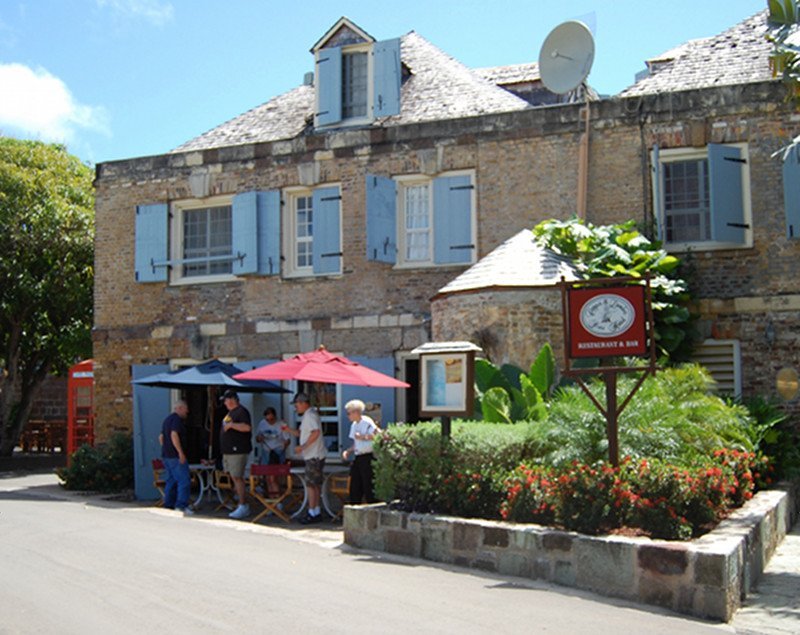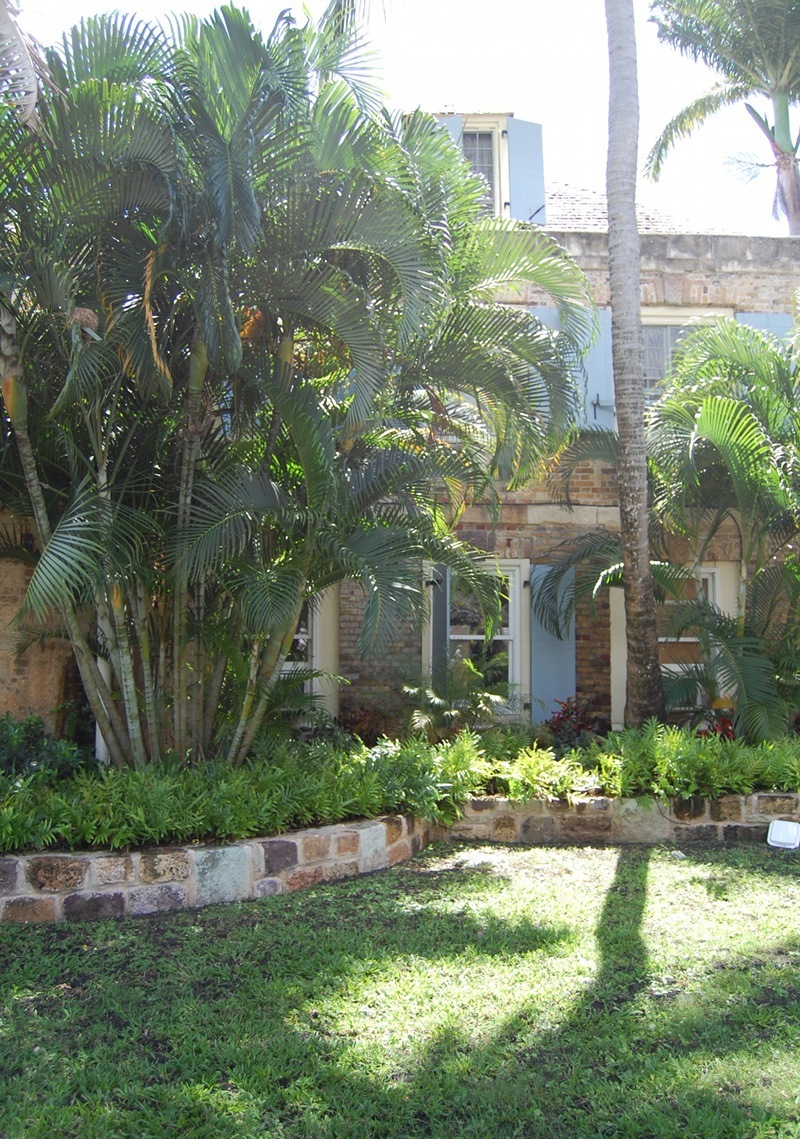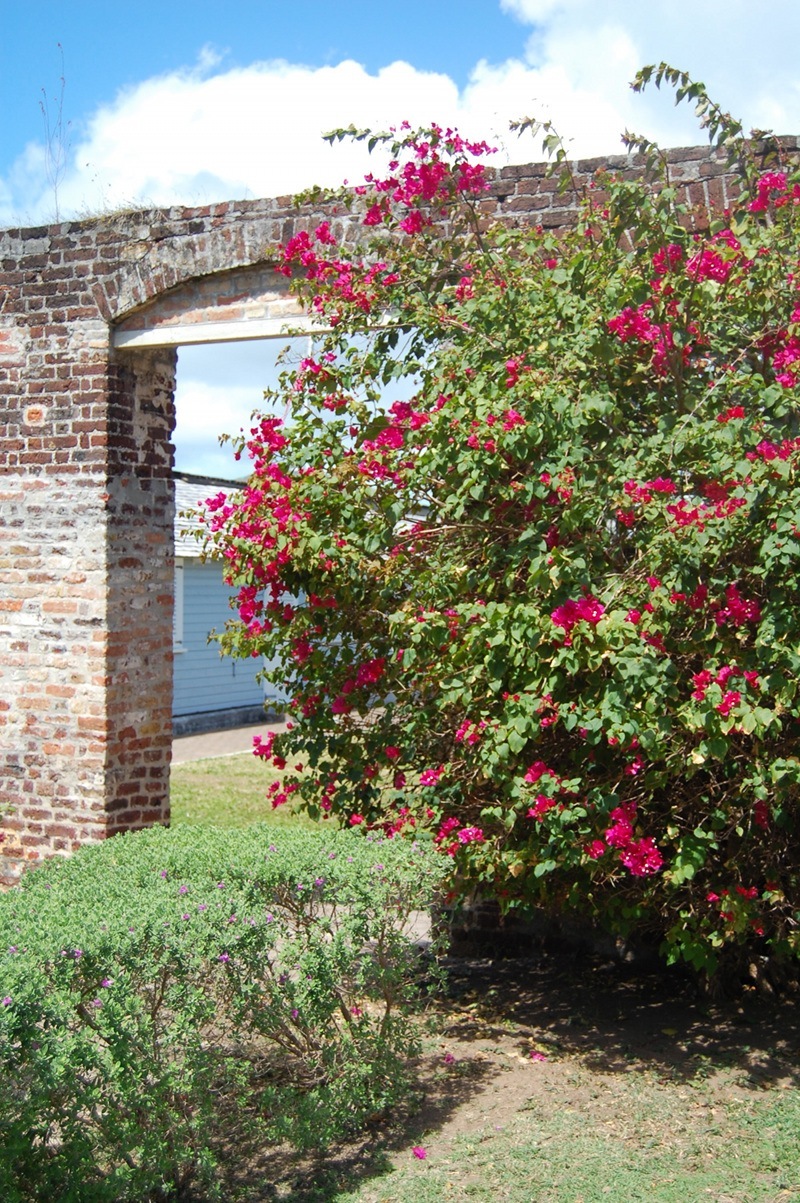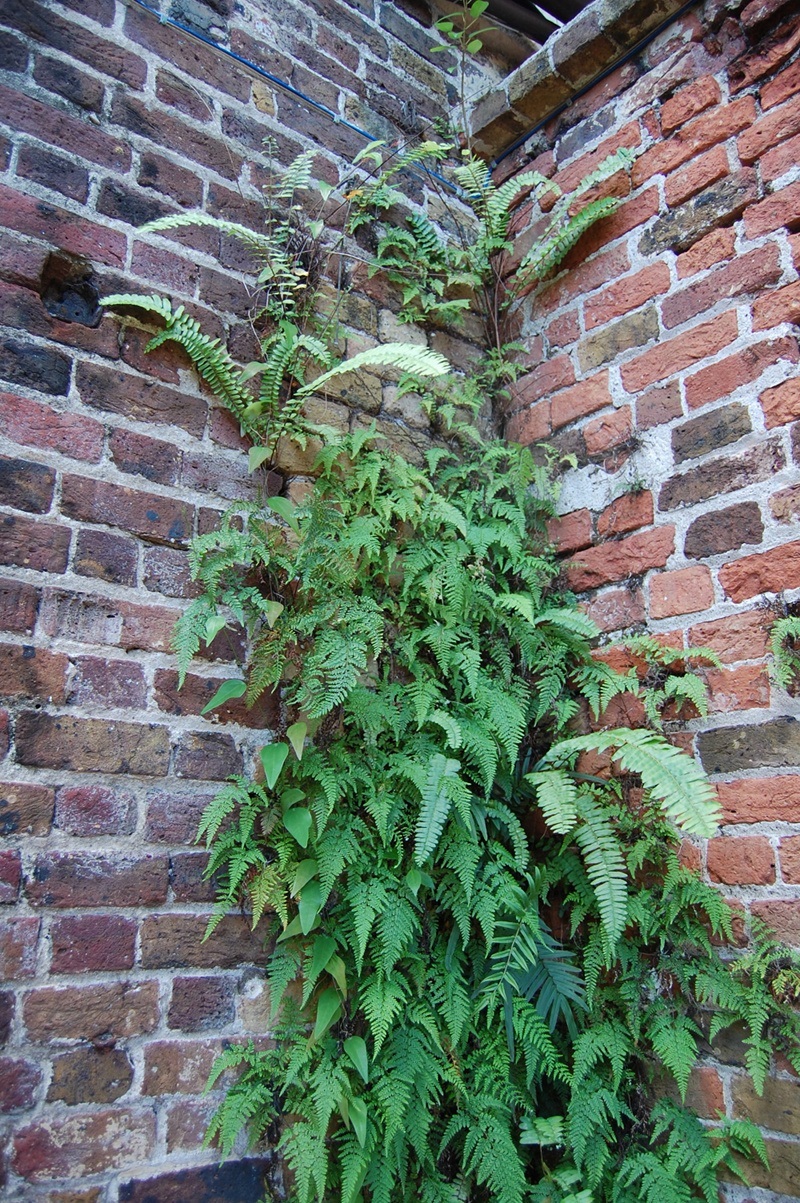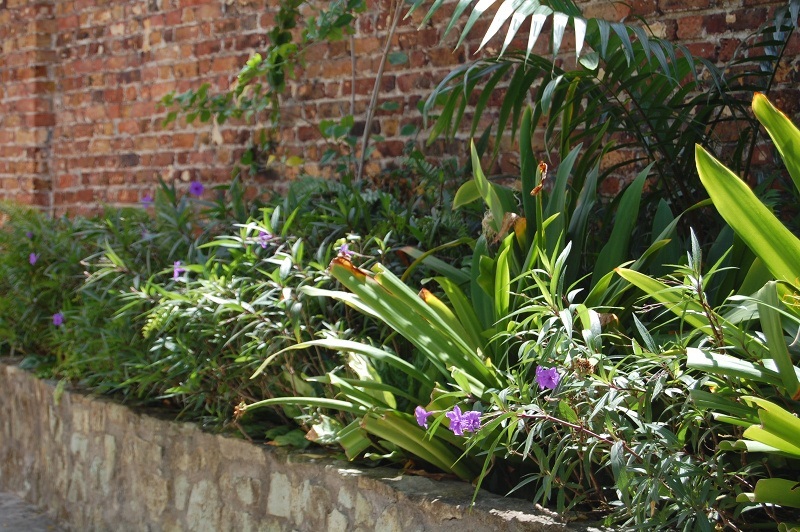HYDRANGEAS 101
Hydrangeas are one of the mainstays of the American garden. They put on a show from mid-Spring to late Fall. Although they are a fan favorite, their care and identification can be a bit mystifying. This is an effort to clear up some of that confusion, so that you can choose the right hydrangea for the right spot, and give it the TLC it needs to reach its full potential.
HYDRANGEA MACROPHYLLA
The species Hydrangea macrophylla (meaning big leaf) encompasses the old-fashioned “Mop Heads” that bloom in a range from blue to pink, depending on the soil pH, as well as most Lacecaps, and the new “everblooming” hybrids.
THE CLASSIC MOPHEAD HYDRANGEA is a deciduous shrub, 4 to 5 feet tall and wide, with large round blooms and glabrous 3-4 inch wide leaves. Depending on the cultivar and the soil conditions, the blooms range from blue to pink. The blossoms of the old-fashioned Mopheads (unlike the newer ever bloomers) progress, for the most part, at the same time — in mid-to late Spring, the blooms emerge, gradually intensifying in color until early Summer. The blooms become more muted as Summer progresses. Take the time to feel the blooms throughout the season. When first emerging, they have a moist, delicate feel. By mid-Summer, the blooms feel more sturdy, and by Summer’s end, they have dried to a paper-like texture. Early to mid-Summer blooms will last in water for at least a week. The dried blooms of late summer will last, without water, until an errant baseball grazes it.
LACE CAP HYDRANGEAS are 4 to 5 feet tall and wide, with large flat blooms that contain fertile flower buds (stay closed) and sterile blooms that open around the perimeter of the blossom. The Lacecap blooms mid-Summer, then fades to a pale blue, purple, pink or ivory color in late Summer.
The “Grocery Store” Lace Cap, pictured above, is one of those Hydrangeas you pick up at the store during Winter, when you need something quick to put on the table because you just found out the dinner meeting is at your house tonight. Every Grocery Store Hydrangea I’ve planted has not only survived, but thrived. The one above is about five feet in diameter after about five years.
RE-BLOOMING HYDRANGEAS are a recent introduction to the market. Growers have produced new cultivars of Mophead Hydrangeas that continue to produce new blooms throughout the growing season. They are marketed under various names, such as Everblooming and Forever, and come in blues, pinks and whites. Much of the gardening world has gone gaga over these Hydrangeas. I have to admit that I am less than gaga about them. I find the plants to be an assault on the eyes. The lure of the classic Mopheads is its graceful aging. Since each of the flowers of the re-bloomers buds, blooms and dries at a different time, the striking impact of a mass display is lost and the planting often looks kind of messy.
That said, I have found the cultivar ‘Blushing Bride’, with its creamy white blooms, to be a nice introduction, since the color range is necessarily in a more limited range.
FAVORITE CULTIVARS
- Hydrangea macrophylla ‘Nikko Blue’: the classic Blue Mophead Hydrangea.
- Hydrangea macrophylla ‘Queen of Pearls’: a new introduction of a pure white blooming Hydrangea, that fades to a pale green. Prefers some filtered shade.
- Hydrangea macrophylla ‘Variegata’: A Lacecap whose leaves have a white margin on the edges.
IDEAL CONDITIONS
Prefers morning sun and afternoon shade, in well-drained soil. Does not do well when competing with large tree roots.
FEEDING
Apply compost, composted manure or shredded leaves around roots. May benefit from a Spring application of 10-10-10 in the plant’s early years. For blue flowers, add a few handfuls of aluminum sulphate to the soil in early Spring (making the soil more acidic). Alternatively, add lime if you want the blooms to be pink (making the soil more alkaline).
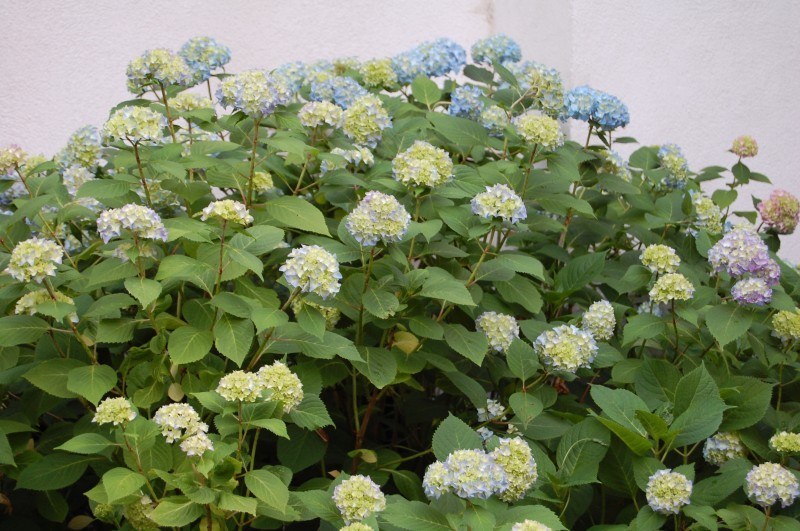
Mophead Hydrangea sporting blooms of various hues (probably caused by the rooted layering of the branches in soil with varying pH levels)
PRUNING
- Plant in a location where the Hydrangea will have the proper amount of room to grow, thus reducing the need for frequent pruning.
- You may deadhead the blooms anytime (cut or snap off bloom without taking too much of the stem) without sacrificing future blooms.
- Prune dead branches any time.
- Other than removing dead branches and spent blooms, do not prune the first 3-4 years after planting.
- Once the plant is about four years old, you can remove 1/4 to 1/3 of the older, brittle, woody, unproductive branches in Summer or Fall, before dormancy. I wait until Summer or Fall because it becomes very easy to determine which of the branches are old farts. They either have no growth on them, or they have produced no blooms.
- If you need to prune the shrub to reduce its size, do so no later than late July, since Macrophylla Hydrangeas begin producing the next year’s flowering buds in August, on old stems (stems produced prior to the year the stem flowers). EXCEPTION: Re-blooming Hydrangeas do not strictly bloom on old wood, and so you will get some blooming even if you prune during the prior Fall and Spring.
HYDRANGEA QUERCIFOLIA
Hydrangea quercifolia, better known as Oakleaf Hydrangea, is a large, sprawling, beautiful, muscular deciduous shrub with 4 seasons of interest. Blooms emerge in late Spring and turn pink in Summer. Leaves become bright red in Fall and exfoliating branches provide winter interest. In mild Winters, many leaves persist and hold their Fall color until new growth emerges in Spring.
Oakleaf Hydrangea is a deciduous shrub that grows up to 10 feet tall and 6 feet wide, with large leaves that look like lobed Oak leaves and large conical blooms (some sterile, some fertile) that emerge white, turning pink, then bronzy, and finally brown by the end of the Summer. It is native to Virginia.
IDEAL CONDITIONS
Prefers morning sun and afternoon shade. Will bloom in dappled shade. Requires well-drained soil– does not like wet feet.
FEEDING
Apply compost, composted manure or shredded leaves around roots. May benefit from a Spring application of 10-10-10 in the plant’s early years.
PRUNING
- Plant in a location where the Hydrangea will have the proper amount of room to grow, thus reducing the need for frequent pruning. Oakleaf Hydrangea get BIG!
- You may deadhead the blooms anytime (cut or snap off bloom without taking too much of the stem) without sacrificing future blooms.
- Prune dead branches any time.
- Other than removing dead branches and spent blooms, do not prune the first 4-5 years after planting.
- Oakleaf Hydrangeas bloom on old wood (stems that have existed since the summer before the current season). Once the plant is five years old, you can remove 1/4 to 1/3 of the older unproductive branches in Summer or Fall, before dormancy.
- If you need to prune the shrub to reduce its size, do so no later than late July, since Oakleaf Hydrangeas begin producing the next year’s flowering buds in August.
- Hydrangea quercifolia ‘Snow Queen’: blooms are up to 8 inches long, and foliage turns a beautiful scarlet in Fall.
- Hydrangea quercifolia ‘Little Honey’: I have not grown this new cultivar yet, but I have heard rave reviews. It growns to only 3-4 feet tall and sports chartreuse yellow leaves, turning medium green, and finally, in Fall, scarlet red. Another dwarf to consider is ‘Pee Wee’.
HYDRANGEA ARBORESCENS
Hydrangea arborescens, or Smooth Hydrangea, is native to Virginia’s woodlands. Its most popular cultivar, Annabelle, has become synonymous with the species. It is beautiful in a mass planting, and long lasting in flower arrangements.
Smooth Hydrangea is a deciduous shrub, 4 to 5 feet tall and wide, with large round white blooms that fade to a pale green in late Summer, and ultimately turn brown in Fall (or earlier, under drought conditions). The leaves are about 3-5 inches wide and 4-6 inches long, darker and thinner than the leaves of Hydrangea macrophylla.
The Hydrangea pictured below is a Lacecap version of the Smooth Hydrangea. I did not know such a cultivar even existed until the one below bloomed in a client’s yard this Summer. I had specified a mass of Annabelles, and all were identified as such by the nursery. Thus, we were quite surprised when most of the Hydrangeas produced the typical large white globes, but a couple produced the lacecap. The one pictured below is probably ‘White Dome.’ So that you ensure you get the cultivar you desire, I recommend either buying the plants in bloom, or holding on to your tags and receipt in case you get a misidentified plant.
[break]
IDEAL CONDITIONS
Prefers morning sun and afternoon shade, or dappled shade, in well drained soil. It will bloom in deep shade as well, although not as prolifically.
FEEDING
Apply compost, composted manure or shredded leaves around roots. May benefit from a Spring application of 10-10-10 in the plant’s early years.
PRUNING
Unlike the Mophead or Oakleaf, Hydrangea arborescens blooms on new wood. I treat this Hydrangea like a woody perennial. I cut back all branches to about 18-24 inches in Fall or early Spring. It is fine to snip off blooms that have turned brown at any time.
FAVORITE CULTIVARS
- Hydrangea arborescens ‘Annabelle’: the classic Smooth Hydrangea. Its 4-6 inch white blooms, fading to green, are an improvement on the species, which has a more understated bloom.
- Hydrangea arborescens ‘Incrediball’: Annabelle on steroids. Larger blooms, and stems that do a better job withstanding the weight of their blooms, especially when wet from watering or rain.
HYDRANGEA PANICULATA
Hydrangea paniculata differs from the other Hydrangeas in two ways: first, it prefers full sun, and second, it can be trained to grow into a small tree. ‘Limelight’ and ‘Tardiva’ are the two most popular and widely planted cultivars.
LIMELIGHT: A deciduous shrub or small tree, up to 10 feet tall and 6 feet wide, with a profusion of large oblong blooms that emerge pale green, become white, and usually turn pink late in Summer. The leaves are 2 inches wide and 3-4 inches long. The plant is spectacular from a distance because it is covered in blooms, but at closer range it is not a very graceful looking plant. For this reason, it is important to take care in pruning it.
A new cultivar, ‘Little Lime’, has hit the market. It is billed as a dwarf version of the Limelight Hydrangea. While it is a smaller version of the Limelight, it sends out several longer shoots, making the plant look gawky. Also, the blooms, while somewhat smaller than those of the Limelight, are still fairly large, and look out of proportion to the diminutive plant. I’m not a fan.
TARDIVA: A deciduous shrub or small tree, up to 10 feet tall and 6 feet wide, with cone-shaped blooms that emerge pale green, become white, and usually turn pink late in Summer. The leaves are 2 inches wide and 3-4 inches long. Although the Tardiva does not bloom as profusely as the Limelight, it is a more graceful looking plant than the Limelight. Its natural habit is more tapered, and its branches are less spindly.
IDEAL CONDITIONS
Prefers full sun and moist, well-drained soil. Will bloom less profuseley in part sun.
FEEDING
Apply compost, composted manure or shredded leaves around roots. May benefit from a Spring application of 10-10-10 in the plant’s early years.
PRUNING
Hydrangea paniculata blooms on new wood (stems that develop on the plant in the current season’s growth), thus it can be pruned, without sacrificing bloom, anytime except late Spring and early Summer (when buds are set). To keep as a 4 to 5 foot shrub, prune back to about 24 inches in Fall or early to mid Spring (see picture below). To train as a small tree, remove lower branches, and spindly or crossing interior branches in Fall, Winter or Spring.
One observation I made in my own yard, that may or may not be true for the plants in general: the Limelights that I whack back completely tend to produce smaller, more rounded blooms (about 3-5 inches in diameter) than those I only thin, but let grow into small trees (blooms are more oblong, and about 6-8 inches long and 3-5 inches wide).
HYDRANGEA PETIOLARIS
Climbing Hydrangea (Hydrangea petiolaris, also known as Hydrangea anomala subspecies petiolaris), is a deciduous vine. It usually climbs to about 10 feet, but can climb up to 60 feet. Its tendrils cling to rough surfaces. It will grow on walls, fences and even trees. I have seen it planted to scamper across the ground or rocks as well. Flowers are off-white flat clusters, 6 to 10 inches across, with tiny fertile flowers in the center, surrounded by a ring of larger 4 petaled sterile flowers. The exfoliating bark on the branches provides Winter interest.
IDEAL CONDITIONS
Will tolerate full sun to part shade, preferring morning sun and afternoon shade. Soil should be rich, moist and well-drained.
FEEDING
Apply compost, composted manure or shredded leaves around roots. May benefit from a Spring application of 10-10-10 in the plant’s early years.
PRUNING
Grows slowly its first few years. It often does not flower for at least 5 years after planting. The vine grows out from its support, as well as up the support. If outer growth is not desired, prune as necessary. Otherwise, only prune for size, just after flowering.
RESOURCES:
North Carolina State University Department of Horticulture
Michael Dirr, Manual of Woody Landscape Plants
Richmond Times Dispatch article by Nancy Ross Hugo many years ago
NASHVILLE’S CHEEKWOOD BOTANICAL GARDENS
The Cheekwood estate was the Nashville home of Leslie Cheek and Mabel Wood Cheek, early investors in Maxwell House Coffee. The limestone mansion and extensive gardens were designed by New York-based residential and landscape architect Bryant Fleming. Cheekwood is a Southern suburban interpretation of an Eighteenth Century English Country House. The estate is now a museum and botanical garden. I explored the incredible gardens last summer while in Nashville.
Cheekwood has a Richmond connection. Mary Tyler Freeman Cheek McClenahan, one of Richmond’s most accomplished women, was married to Leslie Cheek, Jr., the second director of the Virginia Museum of Fine Arts. Mrs. McClenahan was dedicated to improving the lives of Richmond’s poor, and dedicated to the City’s urban renewal and preservation of its history, arts and landscapes. She co-founded, with Carter McDowell, Richmond’s Better Housing Coalition. Mrs. McDowell is still a driving force in the continuing success of the Coalition, ensuring that the vision of the founders is realized.
Many sources of water, including the three ponds that serve as a reservoir for other water features, as well as streams, fountains, formal pools and naturalistic pools, adorn the grounds.
Stone and ornamental iron also dominate the grounds, and effectively connect the gardens and the house. Local master metalworker Philip Kerrigan, Jr., created the estate’s ironwork. Cheekwood was his first major commission, and he went on to collaborate with Fleming on other projects. Kerrigan is credited with reviving the ornamental metal arts in Nashville.
In the 1990’s, Nashville based landscape architect Ben Page led a team in restoring the original gardens, including the view sheds seen from the mansion when it was originally built in the late 1920s.
Peter Fleming anchored the formal gardens with masses of Boxwood.
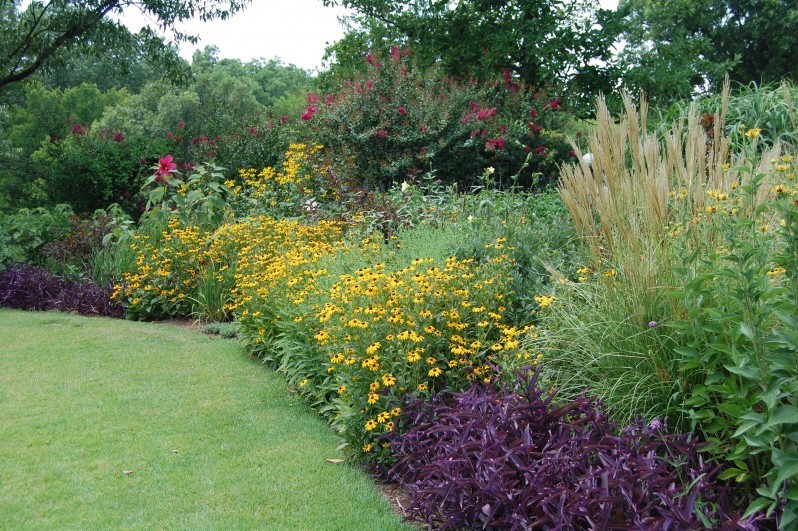
Black-eyed Susan (Rudbeckia hirta), Rose Mallow (Hiiscus moscheutus), Rose of Sharon (Hybiscus syriacus), and grasses anchor the late summer perennial border
This perennial border provides four seasons of interest. By late summer, it is bursting.
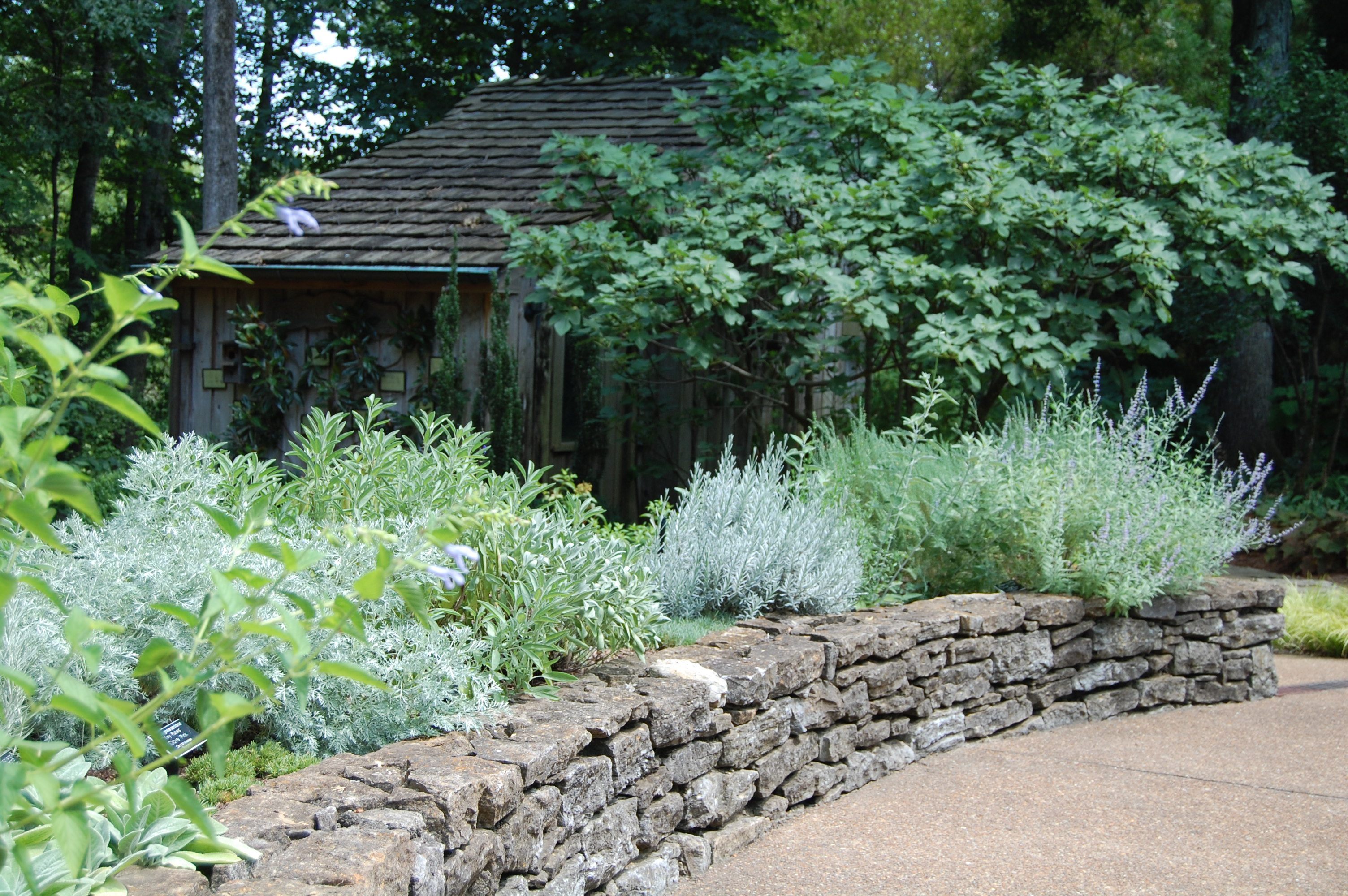
Russian Sage (Perovskia atriplicifolia), Lavender (Lavendula angustifolia), Lamb’s Ear (Stachys byzantina), Nepeta sibirica (Catmint), PInks (Dianthus), and several Salvias make up the Silver Garden
The gray stone walls are the perfect foil for the silver-foliaged plants.
Gorgeous Japanese Maples dot the landscape.
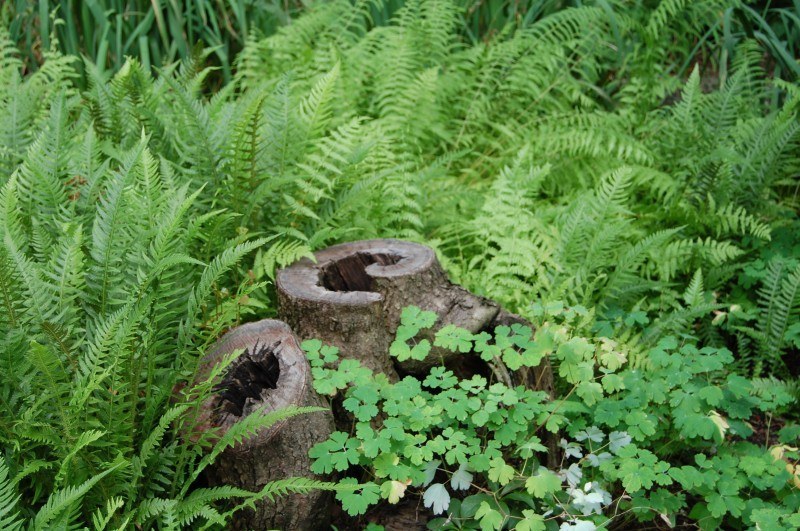
Japanese Beech Fern (I think) (Thelypteris decursive-pinnata) and native Columbine snuggle up to a decaying double tree trunk
This border between two brick walls succeeds because it is predominantly foliage, with a range of pinks that complement the red brick.
The Robertson Ellis Color Garden is a study of color as a design element.
If you find yourself in or near Nashville, I highly recommend a visit to Cheekwood Botanical Gardens.
A GARDEN GEM ALONG THE JAMES RIVER
THE GARDEN CLUB OF VIRGINIA KICKS OFF THE RICHMOND TOUR WITH A GARDEN THAT MARRIES CLASSICAL PRINCIPLES AND A NATURAL SETTING
Martee and Charles Johnson graciously opened their home and garden for the Garden Club of Virginia’s Historic Garden Week Tuesday, April 24. Proceeds from Garden Week tours held throughout the Commonwealth this week are used to restore and preserve Virginia’s historic gardens.
The urns flanking the front door are planted simply with white Geranium, green and variegated Ivy and Ferns.
Camassia leichtlinii bulbs are just beginning to bloom. Camassia, like almost all of the plants in the Johnsons’ gardens, are deer resistant.
Hatcher lives life in full blur.
Tuckahoe (you can call him Tucky) hasn’t been able to convince Hatcher that life is a marathon, not a sprint.
The garden is a magnificent example of allowing the site to dictate the design. Instead of heavily planting the garden with a riot of color, the Johnsons have used color judiciously, allowing the evergreen backbone to frame the breathtaking views of the James River and Williams Island beyond.
Landscape Architect Charles Gillette designed the original gardens, terracing the property and creating strong axial lines. The lower garden is dominated by a large terrace overlooking the river. The upper terrace, random-width Bluestone bordered by a hedge of Green Gem Boxwood (Buxus microphylla ‘Green Gem’), was designed by Charlottesville based Landscape Architect Charles Stick. Stick masterfully incorporated his own classically designed terraces, walkways and hedges into the existing Gillette landscape.
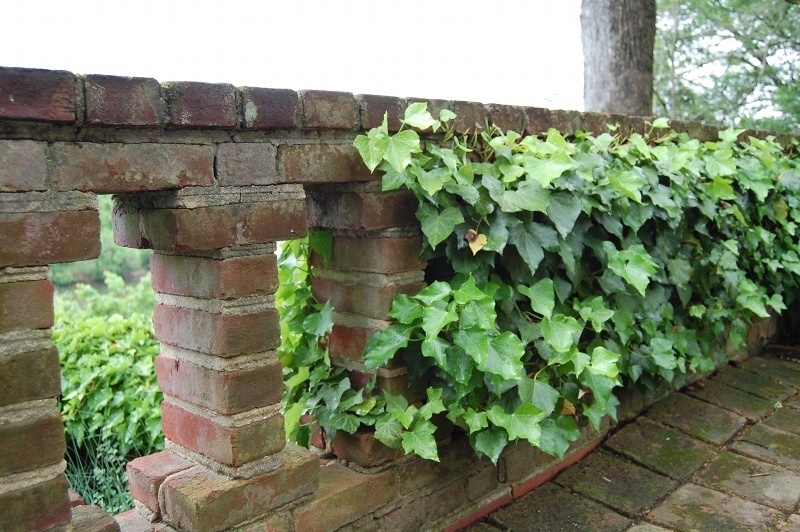 The pierced brick wall softened by Ivy is a classic Gillette feature.
The pierced brick wall softened by Ivy is a classic Gillette feature.
I love green mortar.
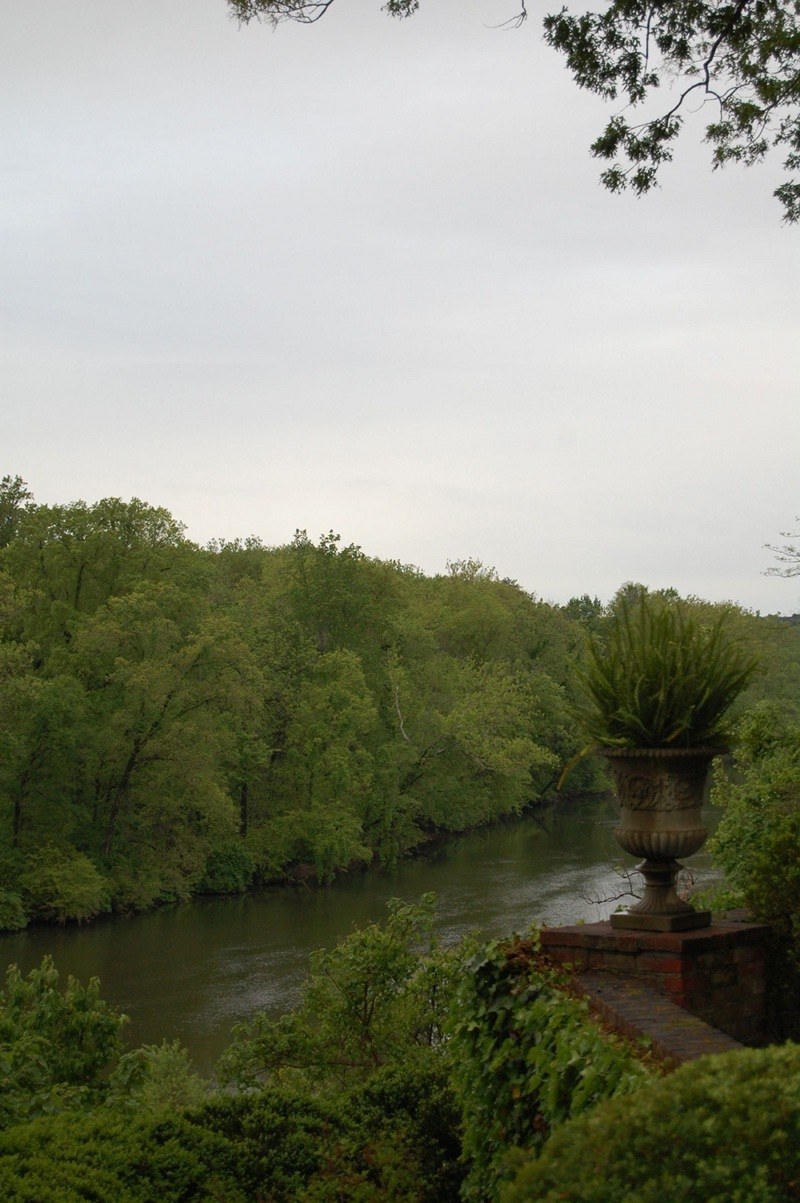 Under stormy skies the James River bisects Williams Island in front of the Johnsons’ home.
Under stormy skies the James River bisects Williams Island in front of the Johnsons’ home.
The strong evergreen backbone reinforces the formal layout of the walkways and terraces, but gives way to more naturalistic plantings, many native, closer to the river.
Brick paths pave the central axis and the primary paths closest to the house, but more informal crushed stone paths are used closer to the river. Peonies and Astilbes will be in full bloom in another week. More Camassia are just beginning to bloom.
Steps also become more naturalistic as paths travel toward the water.
This cobblestone wall is part of a massive stone retaining wall supporting the lower terrace. The Annabelle Hydrangeas thrive on the embankment.
Mercury anchors the lower terrace. Catmint is just beginning to bloom, and Allium foliage is emerging.
Mercury is fleet of foot, but he can’t catch the CSX train.
This Rose arch leads to a Boxwood Parterre in the lower garden.
The new growth on the expertly clipped Boxwood (see recent blog entry on hedges) creates a tone on tone effect in the Parterre.
Focal points abound in the Johnsons’ garden. The bench and urns sit at the terminus of the Boxwood Parterre.
The monochromatic green background brings out the patina in this old urn.
Martee is known throughout Virginia for cultivating young talent. She has showcased many artists and artisans, including Nicholai Jerome, who owns Spartan Metalwerks. He created The Hand for Martee.
Martee says that three men can sit in The Hand!
The view from the Johnsons’ bedroom. The glass panels upstairs and down slide open.
It’s time to go, to make way for the James River Garden Club women who will create gorgeous flower arrangements with cuttings from Martee’s and other members’ gardens.
JAMES RIVER GARDEN CLUB CREATES FLOWER ARRANGEMENTS FOR THE JOHNSON HOME
Jenny and Noni get to work in the garage on a cold damp day.
Laura checks out the collection of cuttings. The arrangements consist primarily of flowers and greens from members’ gardens. Because the Tulips are spent after this crazy Spring, some Tulips were bought to supplement those grown in the gardens.
Katherine arranges Rhododendron.
Elizabeth and Deborah take advantage of a large mirror as a backdrop.
‘Blue Angel’ Hosta and False Indigo (Baptisia australis)
Liz works in the dining room.
Margaret pulls Peonies and Roses from the buckets.
Single Peonies (Paeonia, spp.), Arum (Arum italicum), Lenten Rose (Helleborus orientalis), Eastern Bluestar (Amsonia tabernaemontana), Lilac (Syringa, spp.), Tulip
Laura takes cues from the painting that dominates the front hall.
Variegated Solomon’s Seal (Polygonatum odoratum ‘Variegatum’), Lenten Rose (Helleborus orientalis), Corsican Rose (Helleborus argutifolius), Coral Honeysuckle (Lonicera sempervirens), Camassia Leichtlinii (from Martee’s garden), Tulips and Roses
European Cranberrybush Viburnum (Viburnum opulus roseum) and Apples
Lily of the Valley (Convallaria majalis)
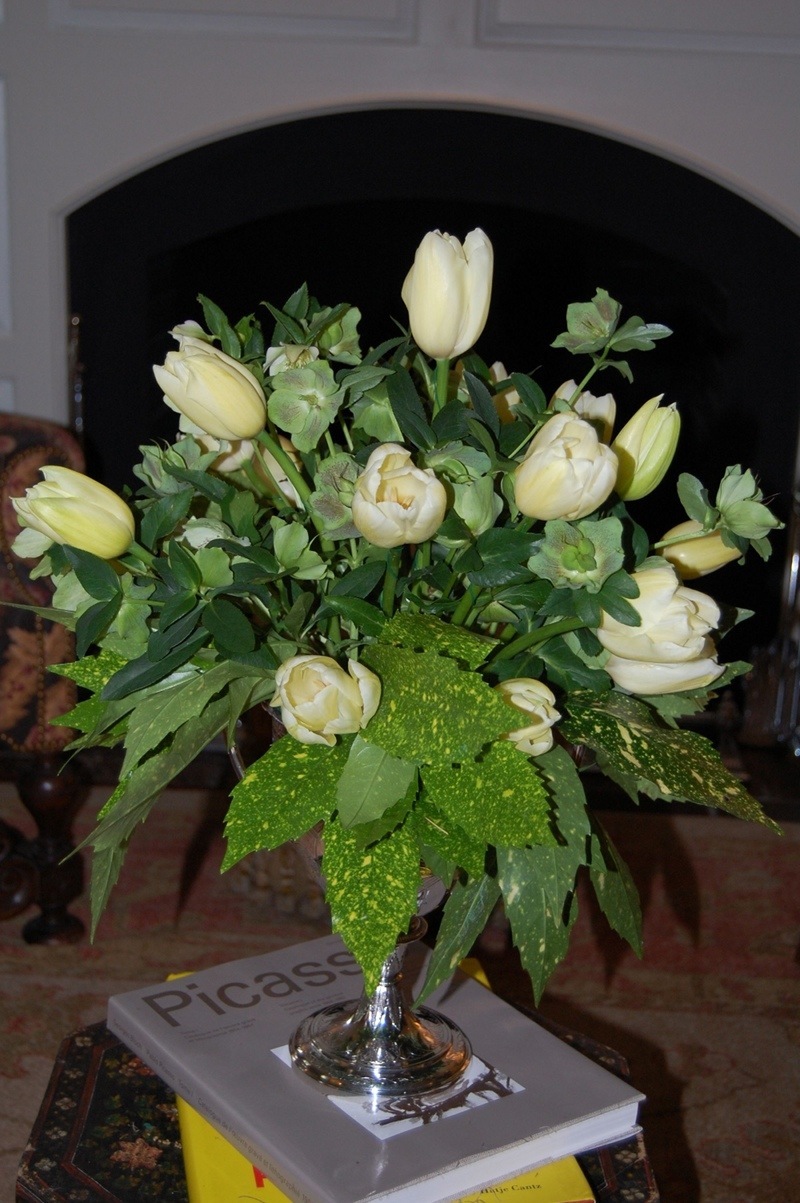 Variegated Aucuba (Aucuba japonica), Lenten Rose (Helleborus orientalis) and Tulips
Variegated Aucuba (Aucuba japonica), Lenten Rose (Helleborus orientalis) and Tulips
Lilac (Syringa, spp.), European Cranberrybush Viburnum (Viburnum opulus roseum) and Poet’s Laurel (Danae racemosa)
THE HEDGE: A CLASSICAL GARDEN ELEMENT
Hedges are a fundamental ingredient in classical gardens. In Gardens are for People, Thomas Church wrote that hedges add “strength and style to a garden,” providing “a year-round fence, a separator of areas, a screen against the house next door, a stage setting for flowers, and a windscreen.”
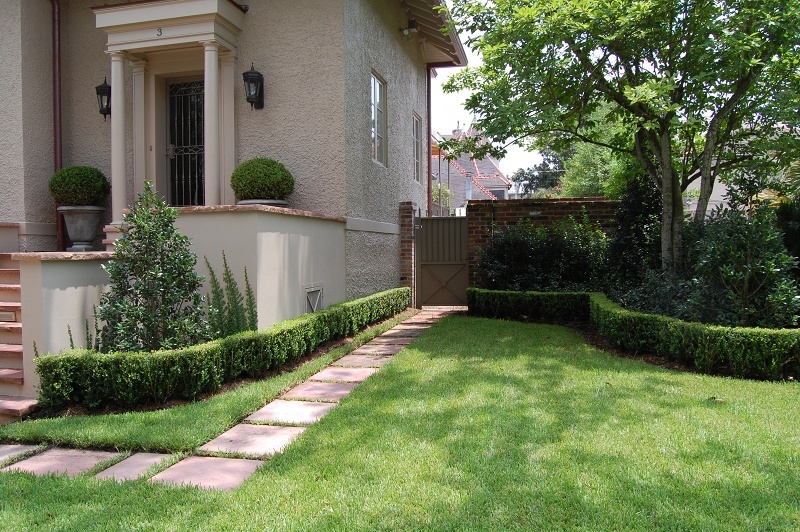 In the garden, above, the hedge provides continuity and definition. Here, the formal layout of the stepping stones, the manicured lawn and the closely cropped hedge are contrasted by the loose, lush greenery that the hedge restrains.
In the garden, above, the hedge provides continuity and definition. Here, the formal layout of the stepping stones, the manicured lawn and the closely cropped hedge are contrasted by the loose, lush greenery that the hedge restrains.
The Hedge in this Charleston garden is used to the same effect. It repeats the straight line of the brick wall behind it. The tree towering in the background provides relief to the linear structure.
This Boxwood hedge in Princeton, New Jersey highlights and defines the random pattern Bluestone walkway and also provides the border for a perennial garden.
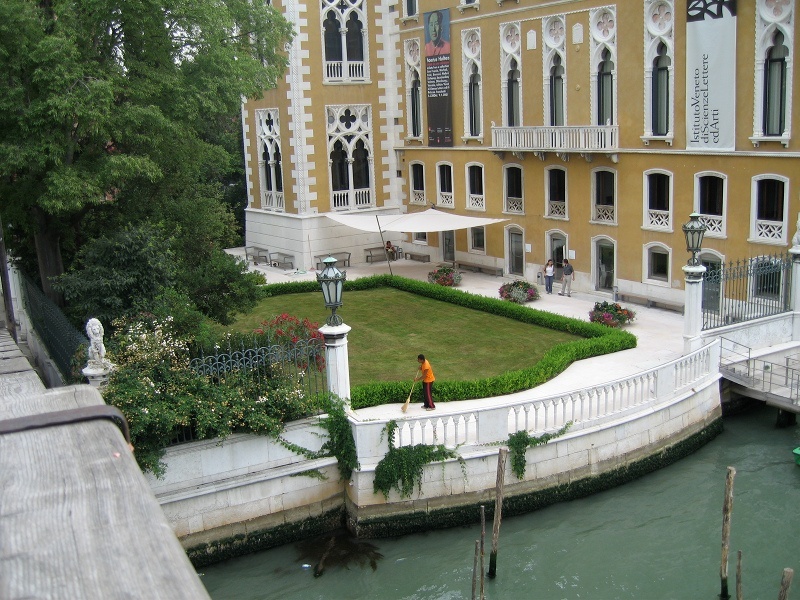 The diminutive hedge above reinforces the arc and jog shape of this lawn in Venice.
The diminutive hedge above reinforces the arc and jog shape of this lawn in Venice.
The hedge below is one of many hedges used to create rooms at Hinton Ampner in England. The topiaried “columns” signal a gateway.
Below are a few more photographs of the many and varied hedges at Hinton Ampner, a National Trust garden in Hampshire England. The gardens were designed by Ralph Dutton, who was influenced by the legendary English landscape gardner William Robinson.
CHOOSING THE RIGHT PLANT FOR THE RIGHT HEDGING SITUATION
I talked with Troy McGrew, an expert plantsman at Styer Landscaping in Richmond, Virginia, about his recommendations for growing healthy and beautiful hedges. Here is his advice:
SMALL HEDGES are perfect when you want to create a knot garden, or define a parterre or other small bed. Four recommended by Troy: Buxus sinica var. insularis ‘Justin Brouwers’ (2 1/2 feet x 2 feet); Buxus sempervirens ‘Jensen’ (2 feet x 2 feet) (does not tolerate full Sun); Buxus microphylla var. japonica ‘Morris Midget’ (1 foot x 1 foot); and Buxus microphylla ‘Green Pillow’ (1 1/2 feet x 1 1/2 feet).
The small clipped hedge above reinforces, but also softens, the strong line of the stucco retaining wall.
The small clipped hedge above creates an outstanding frame for the urns in this New Orleans garden.
The Boxwood hedge in the garden above defines the lawn, strengthens the horizontal plane of the porch, and provides unity by repeating the punctuating Boxwood in the planting bed, but in different form.
MEDIUM HEDGES are very useful to create backbone in a border, or to separate spaces without creating a closed-in wall. For medium hedges, Troy recommends Buxus ‘Green Beauty’ (3 feet x 3 feet), Buxus ‘Green Mountain’ (more pyramidal, 4’ x 3’); and the variegated Buxus ‘Elegantissima’ (2 1/2 feet x 2 feet).
The double hedges in this Charleston garden screen the drive without blocking the views from the piazza. The long lines of the hedges, punctuated by the tall cypresses, give the yard a very formal and architectural feel, but the aged irregular bluestone paving provides just enough of a casualness to give it a mellow vibe.
Villa Gamberaia in Italy is a perfect example of a classic Italian garden: minimal use of flowers and color, strong structural elements, frequent use of axes, and LOTS of hedges. As in the New Orleans photo above, Boxwood is used not only as a hedge, but as a repeated punctuation point. Note the shorter hedges in front, the slightly taller hedge behind and surrounding the potted Lime Trees, the medium squared Boxwood hedge behind the trees, running parallel to the walks, and extremely tall hedge that acts as the wall for this giant outdoor room.
The Otto Luyken Laurel (just finished flowering) provides a backdrop for the terracotta pots on this terrace, and a separation from the lawn.
TALL HEDGES are a wonderful way to screen a driveway or other large area and to use as walls when creating outdoor rooms or separation. The only Boxwood that is useful for a tall screen is Buxus sempervirens (American Boxwood), which, over time, will grow to 15 feet or more. Other evergreens Troy recommends for tall hedges include: Prunus laurocerasus (English Laurel); Prunus laurocerasus ‘Schipkaensis’ (Skip Laurel), Ligustrum lucidum and its cultivars, Osmanthus fragrans and many Hollies.
TROY’S TIPS ON TRAINING AND MAINTAINING HEDGES
- Start pruning Boxwood when they are young, to promote thicker growth at the bottom of the plant.
- “Pinch” or hand prune in late Winter to thin and open up the plant. This allows light and air inside so that the plant can produce leaves along the interior surfaces.
- Prune as needed in late Winter to maintain density and desired form.
- Prune dead or diseased wood, straggly branches or long shoots whenever needed.
- For formal “European” hedges, use hedgeclippers, Japanese shears or (my preference) hand pruners to shear the hedge in late Winter in order to maintain a desired shape or form. Shape as needed throughout the growing season, but do so no later than late Summer (pruning stimulates new growth, which may be damaged by early frosts). Be aware that continuous shearing causes a thick outer shell of foliage that doesn’t allow light or air in. If following a regular shearing practice, be sure to pinch (see above) the plant to allow light and air into the plant.
A fabulous source for most of the plants specified in this blog is Saunders Brothers Nursery, in Piney River, Virginia. Colesville Nursery, Glen Allen Nursery and Sneed’s Nursery all carry Saunders Brothers plants.
GEORGIAN DOCKYARD IS A GARDEN GEM
We stumbled upon Nelson’s Dockyard while on Spring Break in Antiqua.
The Dockyard, known as His Majesty’s Antigua Naval Yard, was built by British Admiral Horatio Nelson in the 18th Century. It was the headquarters of the British Leeward Islands Fleet until the mid-19th Century.
The Georgian buildings and lush grounds have been beautifully restored.
Everyone leaves their mark in this bar, which catches the breezes off the marina. The marina is host to the famous Antigua Sailing Week.
These Boat House pillars survived a hurricane in 1871, and now frame a sunken garden and the lawn surrounding the Admiral’s Inn dining terrace.
We had so much fun at the Dockyards, we decided to go back the next day — to see if the wine tasted better in the bar on the North side of the Dockyards. To our surprise, we stumbled upon Prince Edward and Princess Sophie, heading out for the evening after planting trees to commemorate the Queen’s Diamond Jubiliee. They were running late, so couldn’t sit down and share a glass with us. Such a shame, they seemed like lots of fun.(Photo credit to Susan Robertson)
 We moved on, and most definitely had more fun than the Royals, closing down The Admiral’s Inn.
We moved on, and most definitely had more fun than the Royals, closing down The Admiral’s Inn.

